The Cupra Born has finally brought some excitement to the electric hatch segment in Australia, which has long been dominated by the Nissan Leaf.
But, amid fierce competition from incoming cut-price Chinese-made electric models, is the ‘hot hatch’ positioning enough?
The Born also represents the Volkswagen Group’s first mainstream electric vehicle using the ground-up Modular Electric Toolkit (MEB) platform – ahead of the Volkswagen ID.3 twin, due late next year.
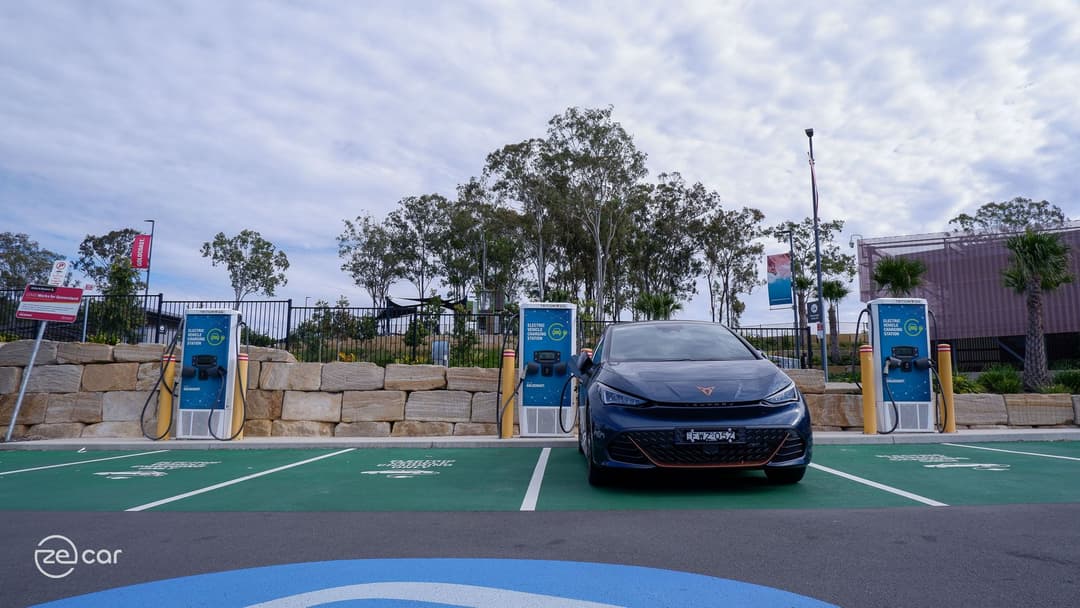
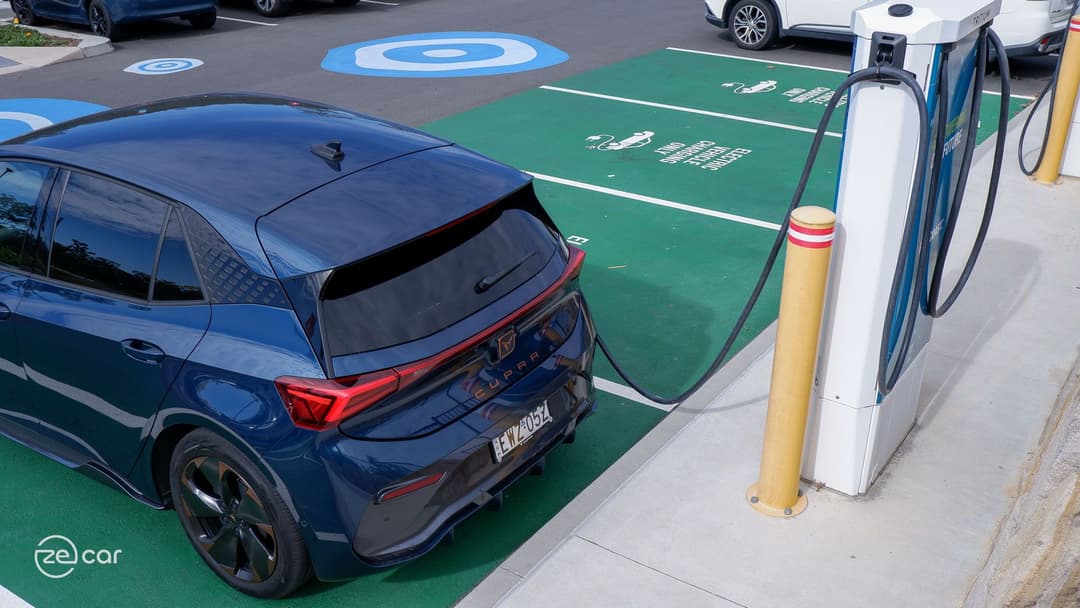
It’s also launched in Australia three years after its European debut with several missing features, as a ripple effect of not having built-in cellular connectivity locally.
On the other hand, it offers long claimed driving range that many buyers crave, represents the cheapest new German-made EV on sale today, and boasts a sharp price tag – in line with its own Leon VZe plug-in hybrid and VZx petrol hot hatches.
We tested the Cupra Born, which is priced from $59,990 before on-road costs and incentives, with the Interior Package ($2900) and Aurora Blue exterior colour ($475) options fitted. It directly rivals the MG 4 77kWh Long Range hatch, Tesla Model 3 RWD sedan, and upcoming Volvo EX30 Single Motor Extended Plus SUV electric cars.
zecar rating
Good points
- Good driving dynamics, NVH
- More efficient, faster charging than expected
- Impressive LED headlights
Could be better
- Missing important features at launch, pricey options
- Unintuitive, distracting tech
- Needs smaller battery option to address compromises
EDITOR’S NOTE: The test vehicle was provided by Cupra Australia for a seven-day independent evaluation.
Cupra Born Design and Practicality
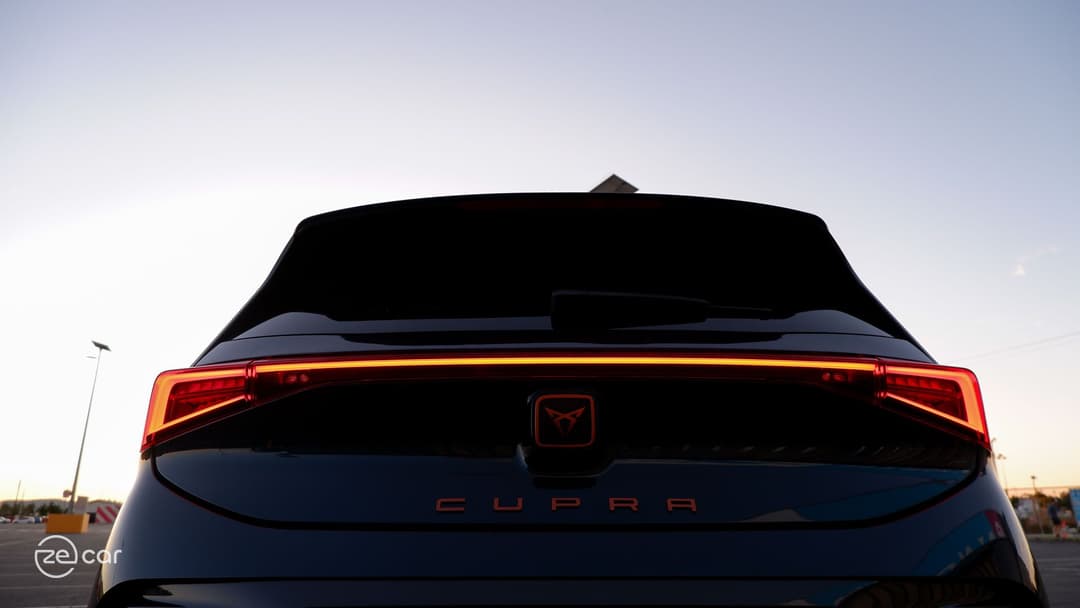
The Cupra Born represents the first small electric hot hatch in Australia – and it certainly looks the part.
While the general body and short front bonnet is clearly shared with the cuter Volkswagen ID.3 sibling, the Cupra’s exterior is more aggressive with sharp LED headlights connected across the front, a prominent Quasar Grey-painted rear bumper, and thin full-width rear tail-lights.
The Spanish car brand’s signature copper accents and triangular shapes help the sporty small EV look more unique. Though, the standard 18-inch ‘Copper Typhoon’ wheels arguably aren’t as visually pleasing with its thick spokes and flat aerodynamic design.
Meanwhile, the Cupra Born’s interior also looks sporty with some copper trim pieces, a perforated flat-bottom steering wheel, a large angled protruding central touchscreen, and suede material on the front armrests as standard.
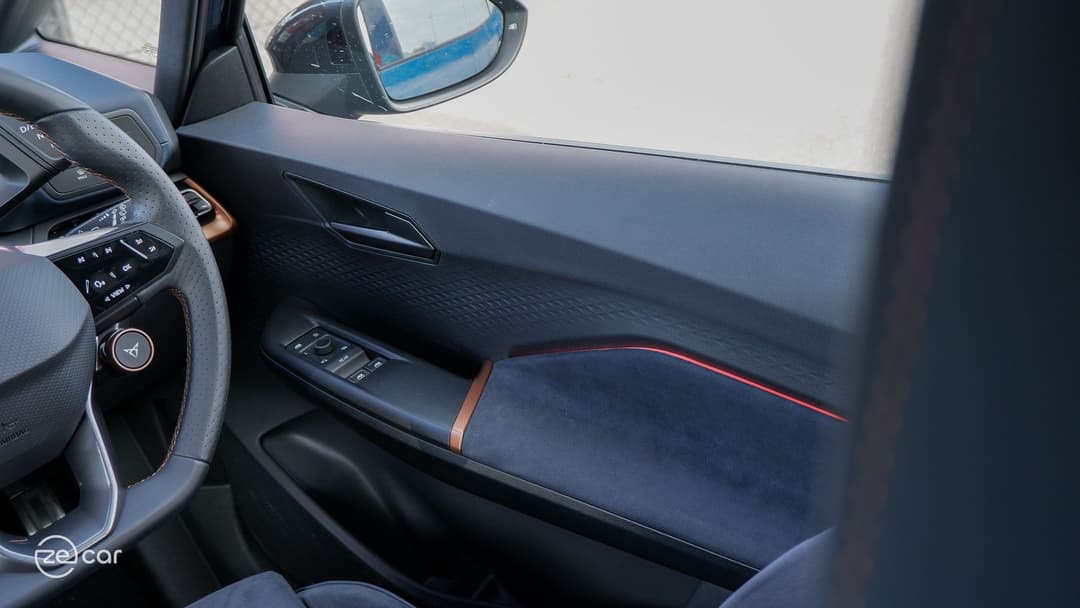
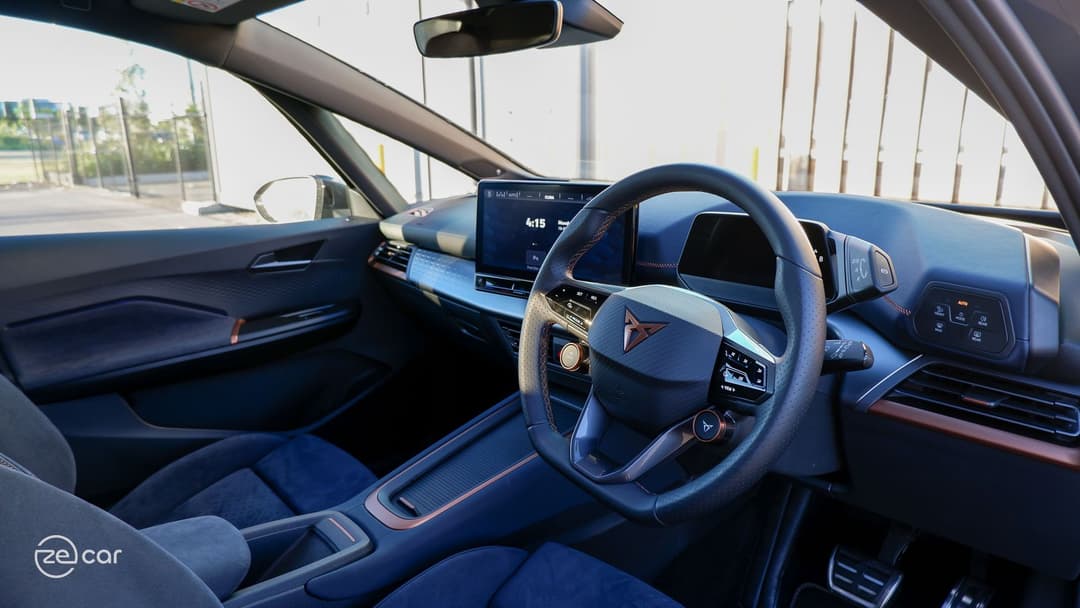
However, it’s let down by hard, scratchy plastics that don't live up to its circa-$60K price tag nor European badge, despite some textured pattern efforts.
Similarly, the silver plastic dashboard and touch-sensitive ‘buttons’ and sliders across the interior aren’t fitting for its asking price. The ambient lighting is also limited to the front doors and centre console, which could’ve been more daring for a sporty brand.
Our tester was fitted with the $2900 Interior Package, which mainly adds Aurora Blue Dinamica suede seats and trim, heated and massaging front seats, and a nine-speaker Beats audio system.
Unfortunately, in reality, the pricey option pack doesn’t match the Aurora Blue exterior colour as well, with a more grey-ish blue look than in pictures. The suede also doesn’t feel as high quality with a rougher and easy-to-mark texture, and the copper stitching and embedded triangles are quite subtle.
The bucket seats are supportive, but the firmer bolstering can be uncomfortable on long drives. The massaging function as part of the Interior Package just pulses the back lumbar.
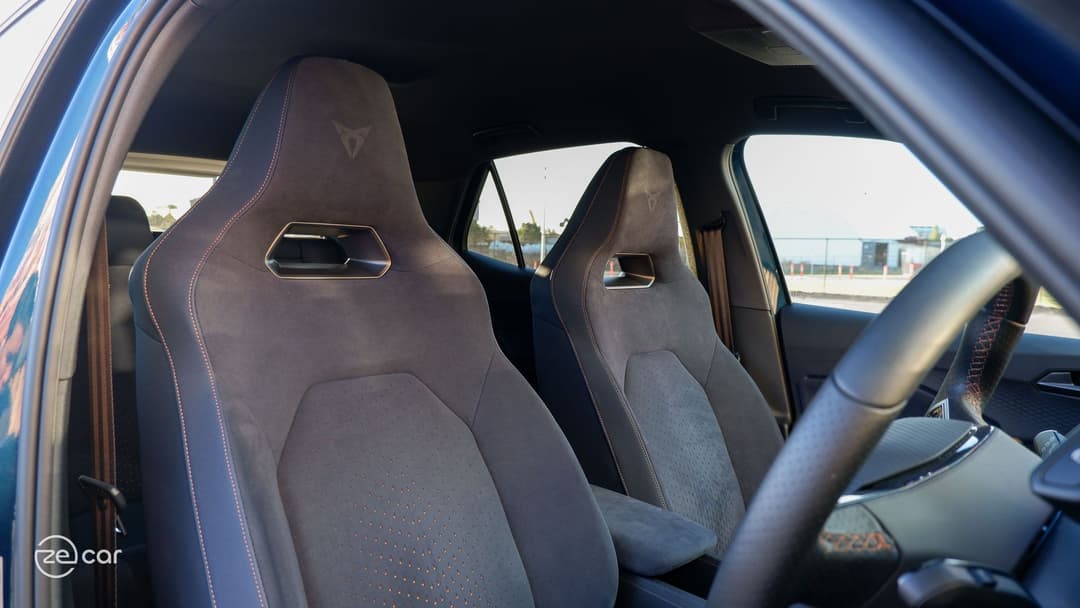
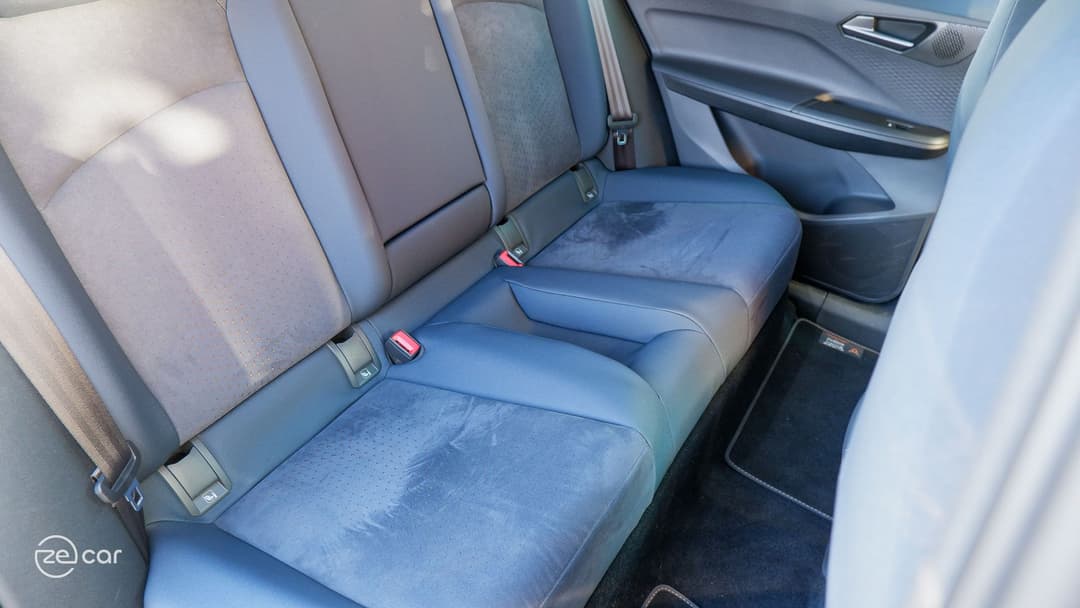
Opt for either the Interior or Performance Packages and they remove the rear middle seat due to rear axle weight limitations on this large 82kWh (gross) battery. This is a disappointing compromise as both options are quite expensive. The Born is available in a smaller 62kWh (gross) battery overseas, which doesn’t have this packaging issue.
Rear seat room is adequate, with decent leg, head and feet room, and a flat floor that isn’t too high despite the large battery underneath.
However, the MEB platform weaknesses are again apparent since the interior space feels comparable to a regular petrol-powered small hatch, despite the ground-up EV architecture. Sitting three people across on the standard five-seat Born would be tight, given the narrow bench.
With the Cupra Born’s middle seat gone (when optioned with any packages), there’s a carved out space to conveniently hold smaller items. Rear passengers also benefit from a fold-down centre armrest with three cup holders (one for mini piccolo’s), two USB-C charging ports, and tinted windows.
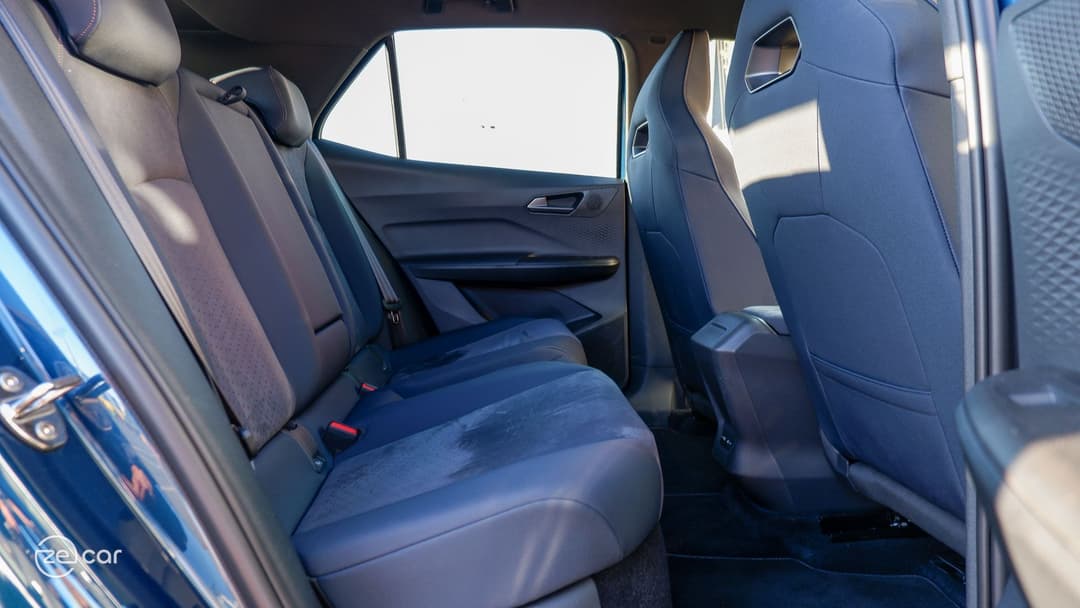
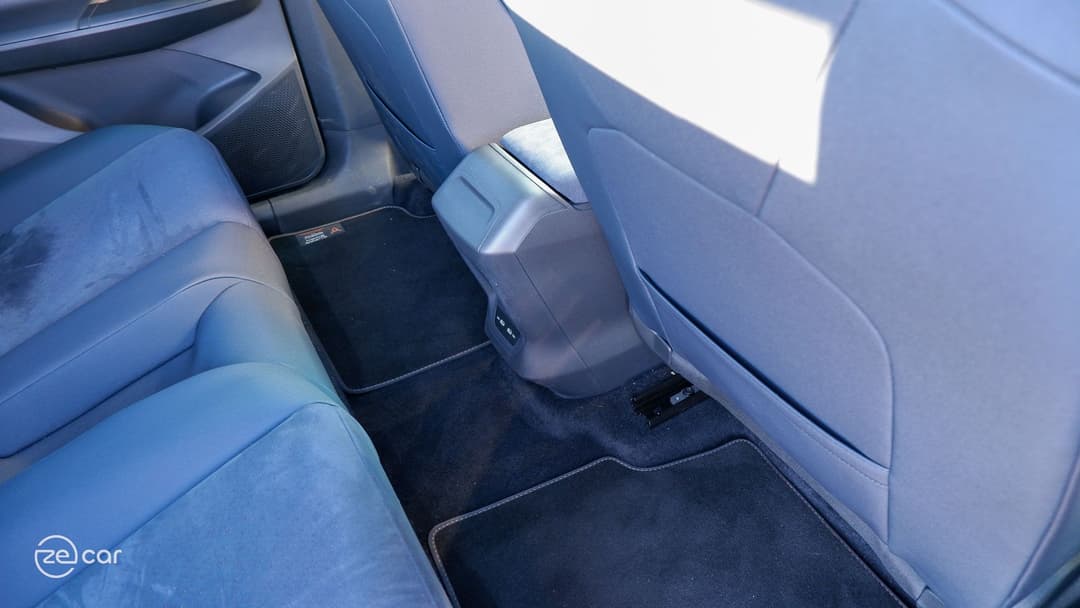
However, our tester’s armrest squeaked when folding, there’s no rear air-conditioning vents – despite the centre console jutting out into rear row leg space – and the rear door plastics feel slightly cheaper while missing out on suede and ambient lighting. Australian-spec Born’s also lack the panoramic glass roof found overseas, which would help lift up the perceived interior quality.
It’s clear the front was Cupra’s priority with a deep, albeit narrow, centre console bin, well-placed cup holders, and another storage area in front. The latter two can be hidden via a long rolling shutter mechanism, which serves as a neat temporary table when closed.
The slanted Qi wireless charging pad is an ergonomic position to place a smartphone (although finicky), with an opening to feed through a charging cable via the two USB-C ports to use wired smartphone projection. But, this leaves the centre cubby open and susceptible to things going in.
Meanwhile, all door pockets are large and don’t force bottles to be slanted, although the glovebox is very limited since the fuse box hasn’t been moved for right-hand drive markets. It also lacks any illumination to see in the dark.
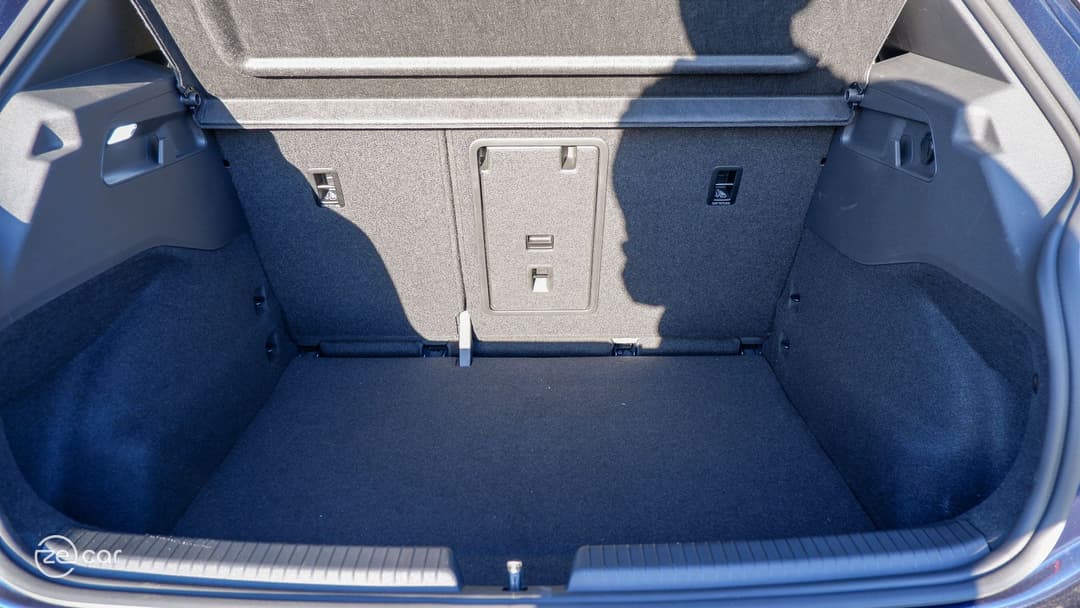
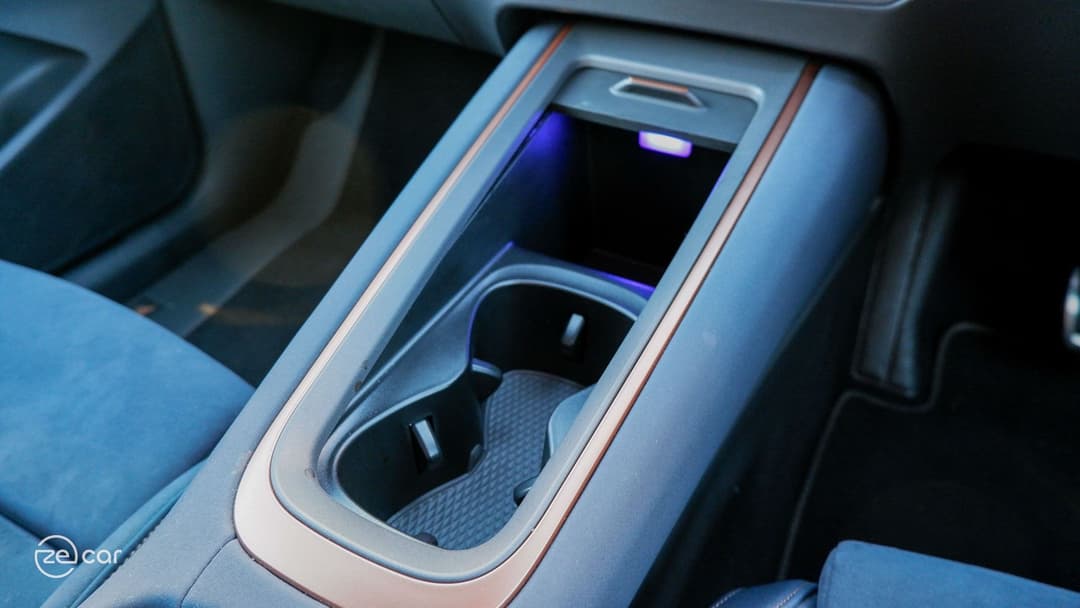
The Cupra Born electric hatch has 385-litres of boot space, with a deep floor and higher loading lip. Importantly, there are two sturdy bag hooks on each side – which isn’t even guaranteed in new large family SUVs nowadays.
While the boot volume is a good usable size, the weaknesses of the dedicated MEB platform and large battery pack again shows here. The capacity is comparable to petrol-engined small cars, such as the Cupra Leon VZx, Volkswagen Golf GTi and Hyundai i30 N, and there’s no space underneath the floor either.
The rear seats can fold in a 60:40 split and the middle can be opened to load longer items, but there’s no frunk due to the short bonnet.
Cupra Born Technology and Safety Assist
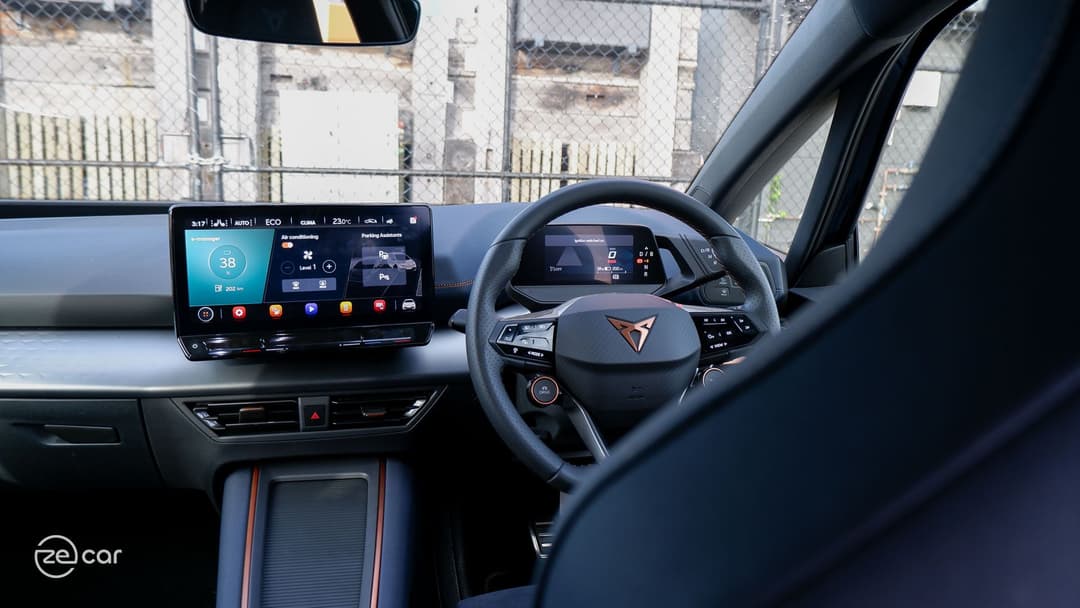
The Cupra Born EV features a clear matte-coated 12-inch touchscreen with a square aspect ratio and angle towards the driver to reduce glare, plus a small 5.3-inch digital driver’s display running a version of the Volkswagen Group’s 3.0 software.
Unfortunately, the technology setup could be the Born's key dealbreaker – but is acceptable once you leap over the learning curve and quirks.
While the operating system looks modern, it has an unintuitive user interface and a slow processor, resulting in ponderous transitions and animations between menus.
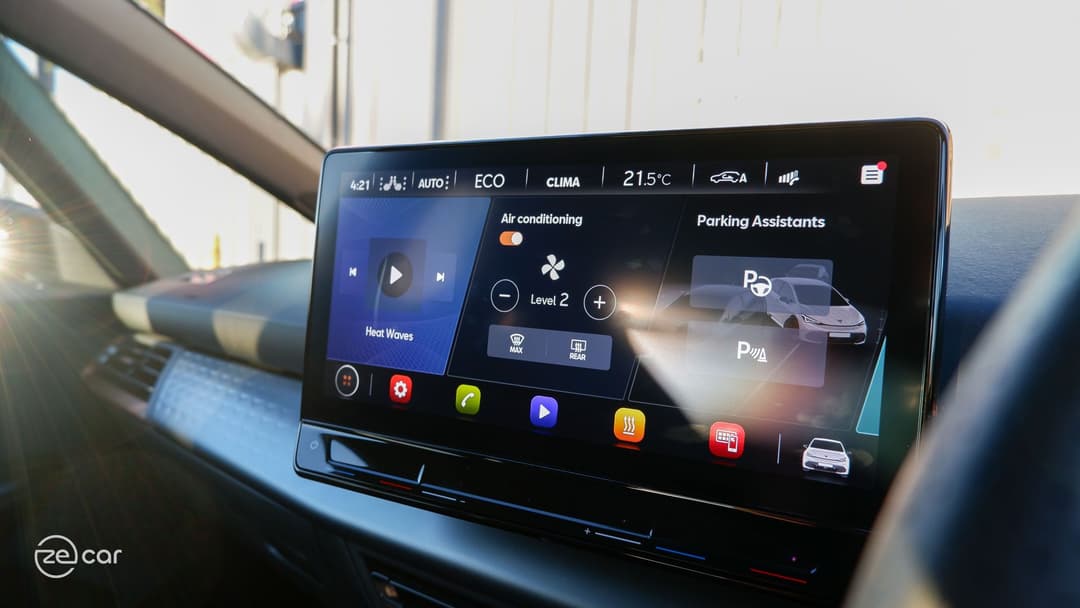
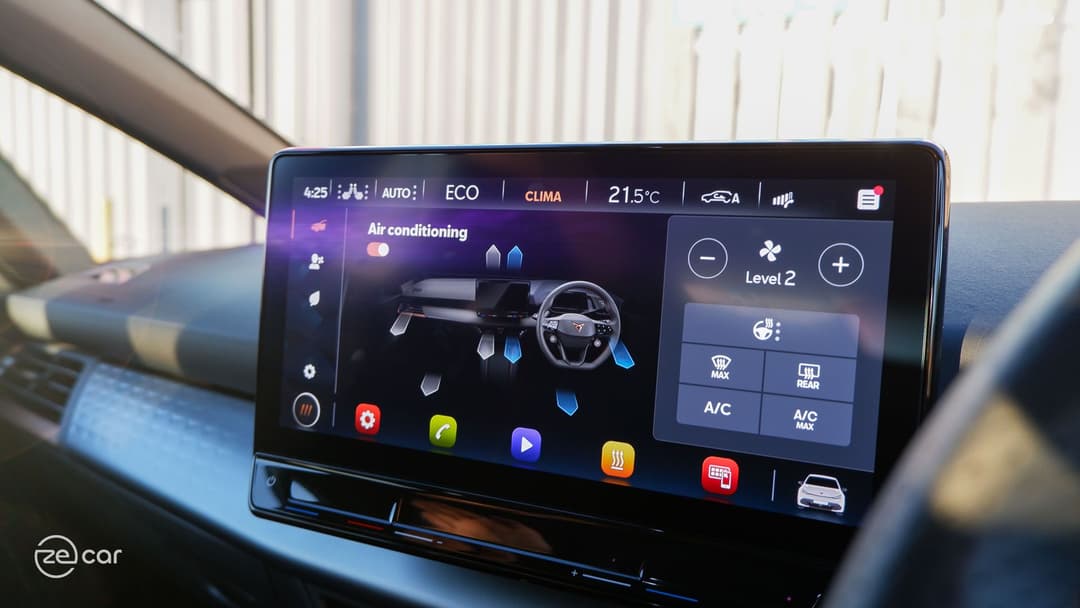
Thankfully, there is a tutorial to help owners learn the operating system and there’s good customisable home screen widgets, bottom app bar icons, and slide-down shortcuts to surface key functions. Though, finding settings can be buried in a complex series of separate pages and you’ll need to use the screen to activate important driving functions, such as auto hold and the 360-degree camera system.
Unlike upcoming Volkswagen EVs, the home button hasn’t been adapted for right-hand drive and is a far reach at the left, even though the screen is angled toward the driver.
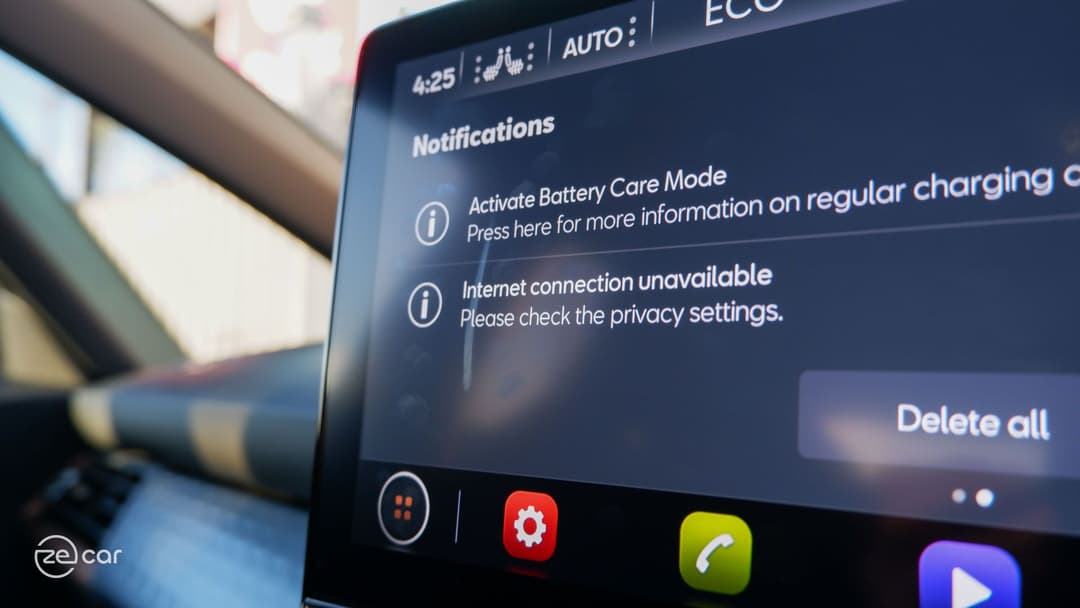
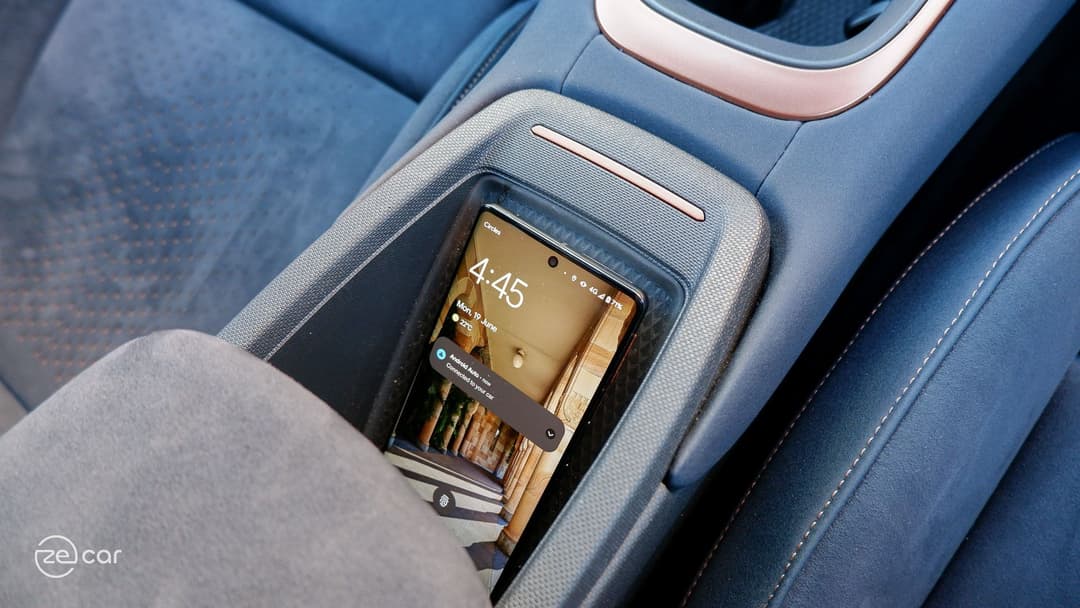
Disappointingly, the lack of internet-enabled connected services in Australia mean the Cupra Born lacks a remote smartphone app, built-in maps, and no AC scheduled charging setting since it doesn’t have location awareness.
These are all basic features that should be on a circa-$60,000 EV. In fact, there’s a persistent notification always reminding you that the Born doesn’t have data connectivity.
Another consequence of not having built-in cellular connectivity is wireless smartphone projection, which is found on the equivalent petrol-powered Leon hot hatch. However, that’s not a major flaw – given the Qi wireless charging pad is very finicky and can’t charge any smartphone with a camera hump; it requires devices to be completely flat on the pad.
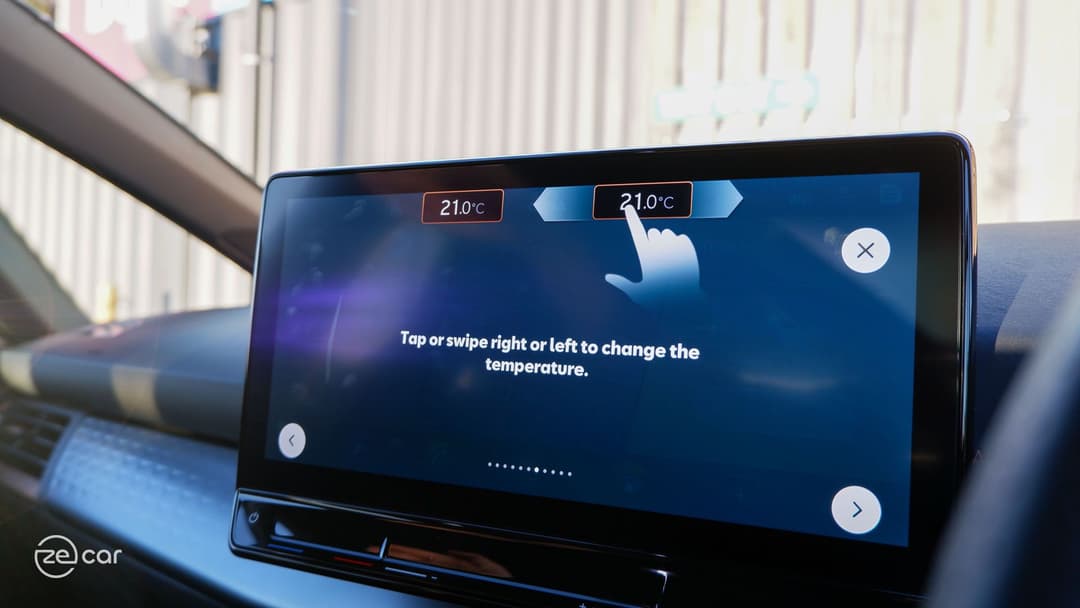
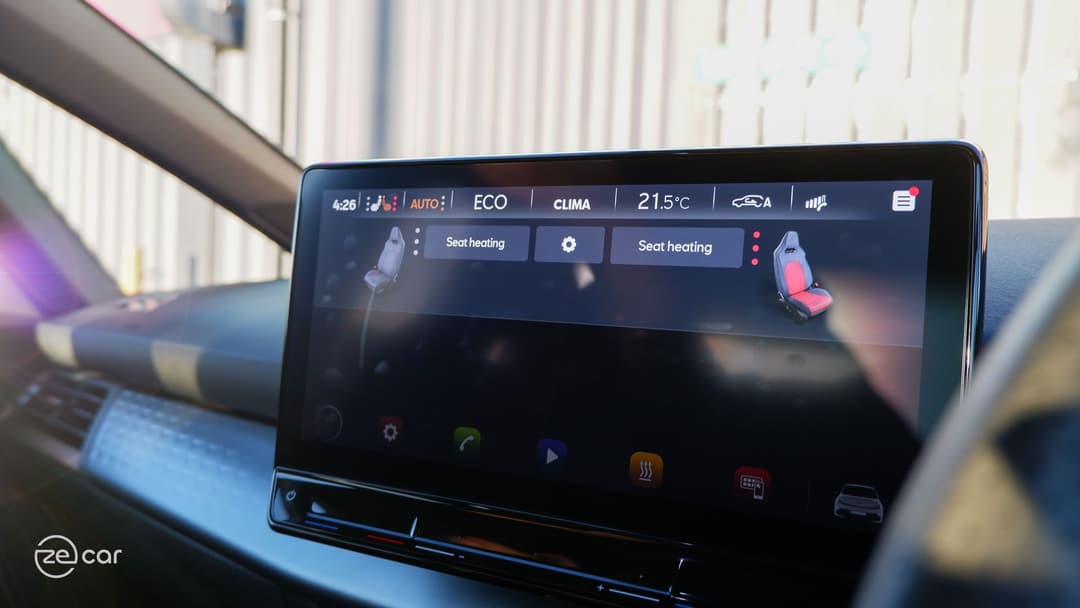
Wired Apple CarPlay and wired Android Auto connects via either of the two USB-C ports and fill up the entire screen, with a persistent bar at the left displaying the climate control status.
Critically, all air-conditioning controls must be primarily operated through the touchscreen.
While it does persistently display the climate control at the top and provides some preset modes, the interface is poorly designed – which can be a distraction when driving.
For example, heated seat controls are in its own pop-down panel, instead of the climate app where the heated steering wheel is. Pressing an air vent in the screen to turn it off (the natural method) actually does the inverse and prioritises it (i.e. turns off all other air vents) on first try, but tapping it again turns on and off the individual vent.
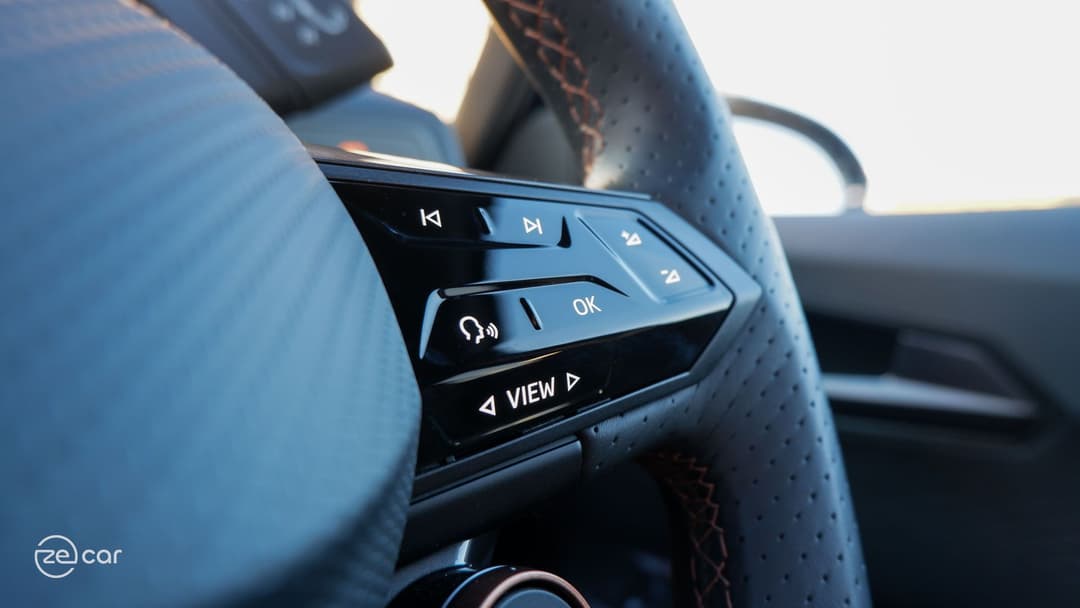
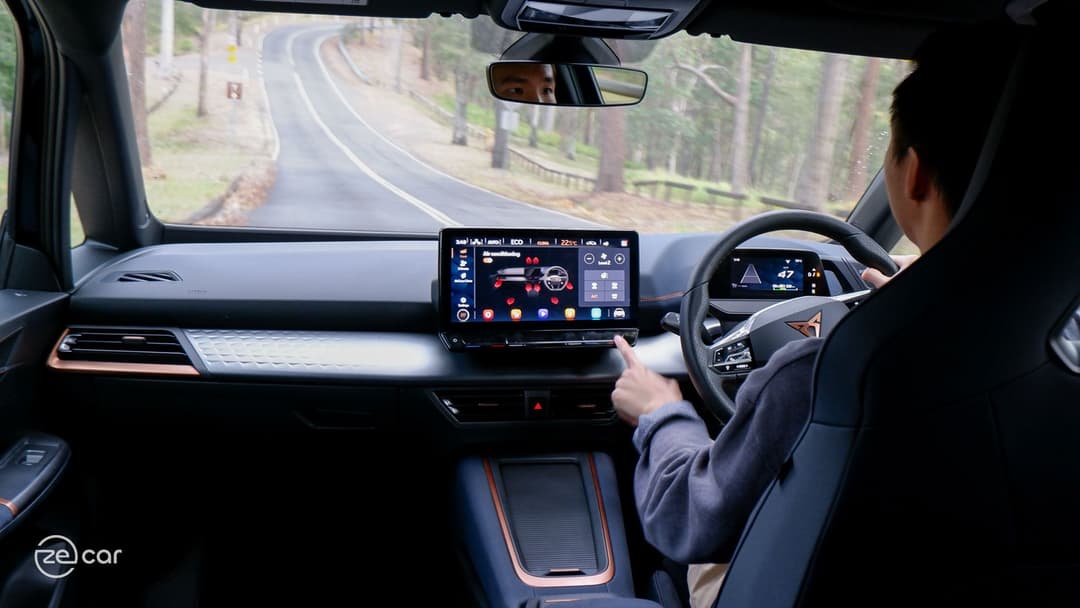
There is a touch sensor strip underneath the display to control the speaker volume and dual-zone climate control temperature via a tap or slide, with the Born’s speakers playing a sound to confirm that you’ve triggered a function. A double-tap shortcut on each side also toggles the respective heated seat.
However, it isn’t illuminated at night, can be slow to respond to inputs and I often need to tap or slide harder in order for it to register.
The touch-sensitive steering wheel controls are more responsive, illuminated and provide strong haptic feedback. But, it has a confusing mix of buttons being tap-only or slide-only, as opposed to the infotainment strip which can do both. Cornering more zealously holding the wheel at the correct nine- and three-quarter position can accidentally hit the volume slider at times.
I also found the touch-sensitive light control panel slow to operate, difficult to know what was pressed and easy to accidentally trigger other buttons. The limitation of two window switches wasn't a major annoyance, even though it quickly defaults to the front windows after holding the ‘rear’ touch button to control all four windows at once.
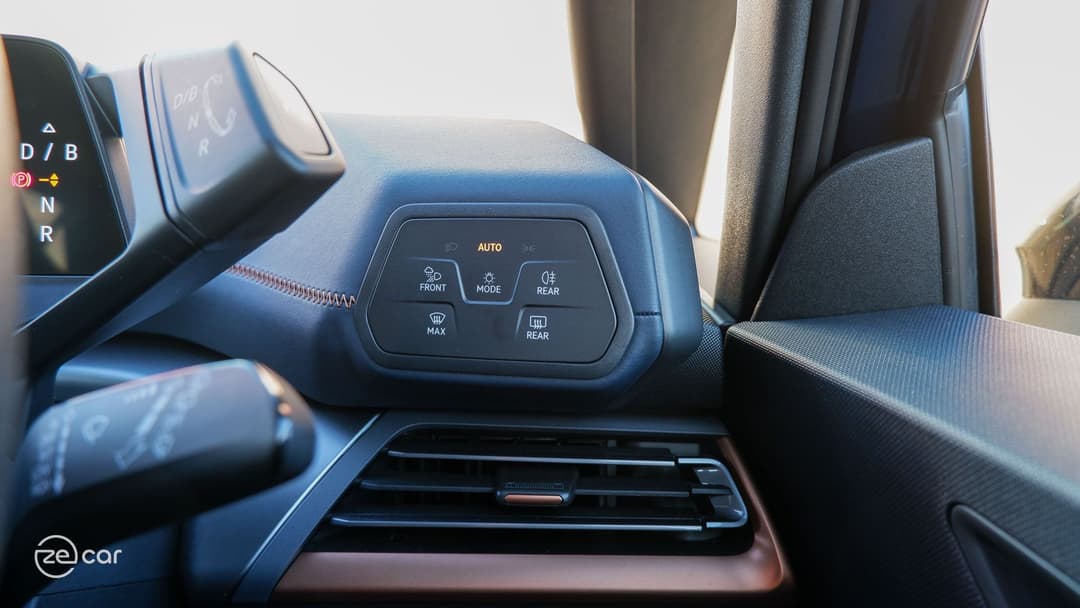
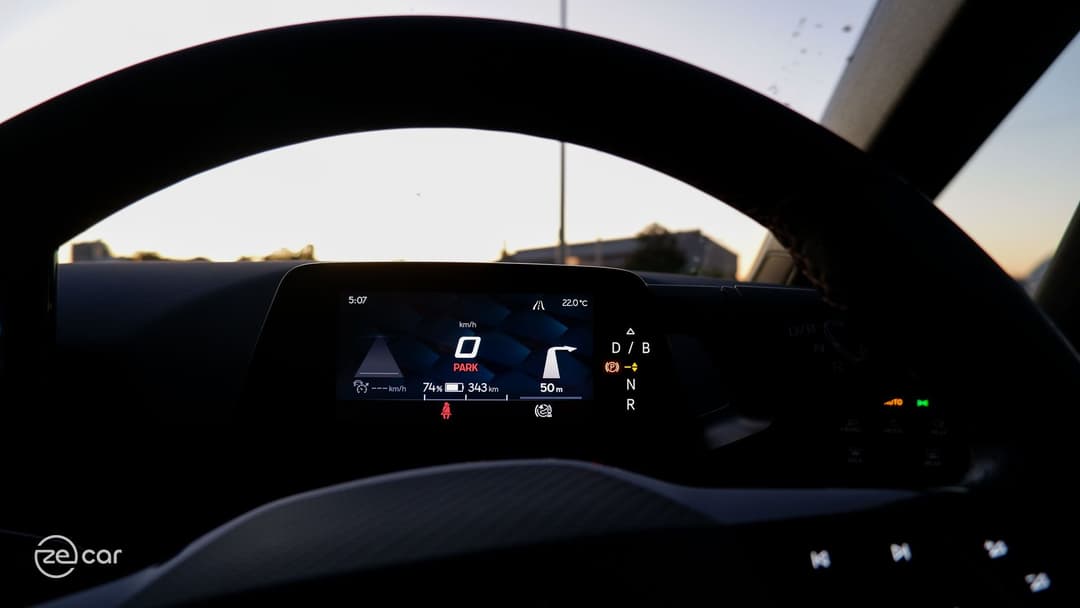
Unfortunately, it took some time for me to initially figure out how to adjust the mirrors, as one dial controls four functions.
Furthermore, the driver instrument display is cleverly attached to the steering wheel column, so they’re never blocked depending on your seating position, unlike some other EVs. It packs a lot of information into the small screen, but the speed readout and battery percentage are always legible and driver’s can easily toggle between two layouts and three widgets via a swipe on the wheel – safety assist, trip computer, and navigation directions.
The latter handily integrates with Apple CarPlay and Android Auto maps. But, the driver instruments can be slow to respond when switching between drive modes or exterior light modes. Australian-spec Cupra Born’s lack a head-up display.
As part of the $2900 Interior Package, the nine-speaker Beats-branded audio system performed well with several sound profiles available. But, it still doesn’t warrant the pricey cost option.
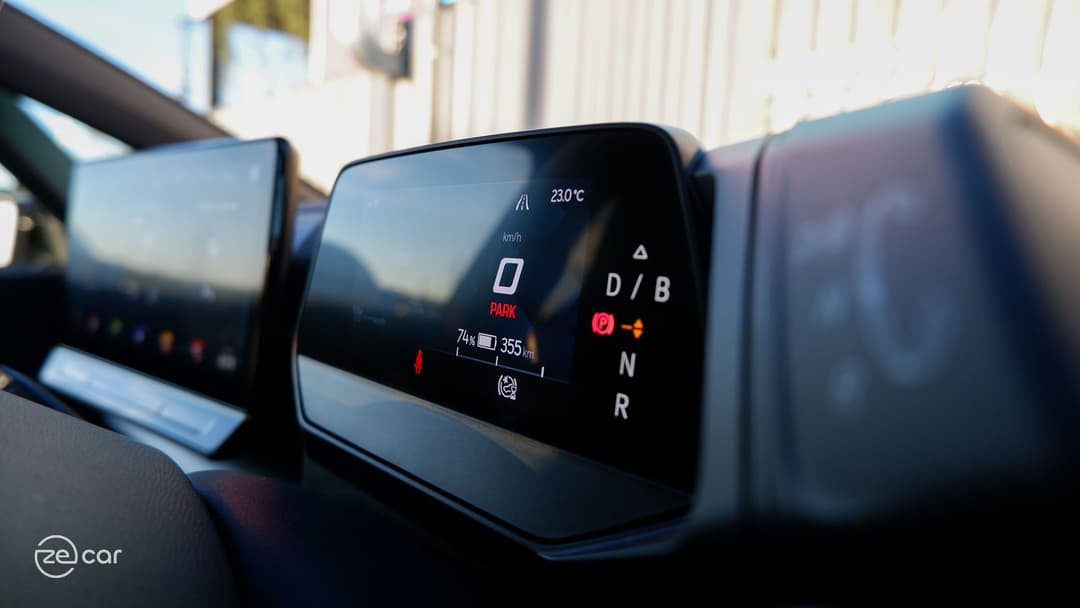
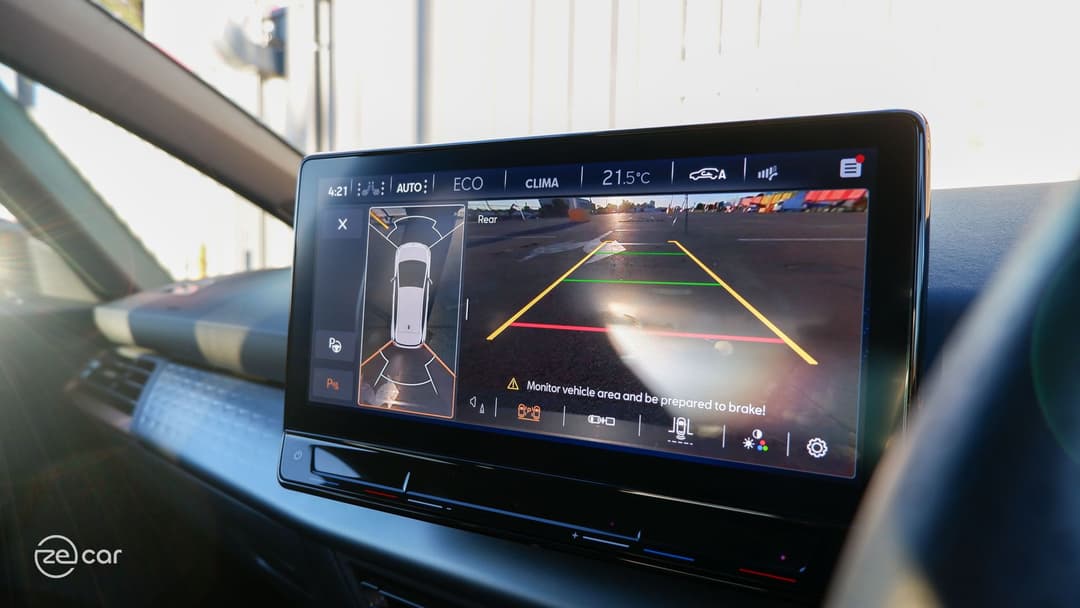
Additionally, the Cupra Born electric hatch is only offered in one high-spec variant at launch in Australia, and includes most safety assistance systems as standard (full details here).
The safety assist warnings are quite gentle, as per European-style, and the adaptive cruise control works mostly well. At times, the system detects vehicles in the adjacent lane and slows down for them, even though it’s not a large truck nor swaying in its lane.
Unfortunately, the lack of cellular connectivity has meant lane centring assist (called ‘Travel Assist’) is missing in the Born locally. It’s a crucial feature that would make long drives more convenient and, again, expected at this price point – even the touch button for it is on the steering wheel, albeit disabled.
I also found the 360-degree camera system low resolution and the top-down view on the infotainment system was obstructed by the large guidelines. The reversing camera also had a distorted view and placed too low at the bumper, unlike its Volkswagen ID.3 sibling which has it hidden inside the tailgate logo. Drivers also need to use the touchscreen to turn on the cameras and it cuts out after 17km/h.
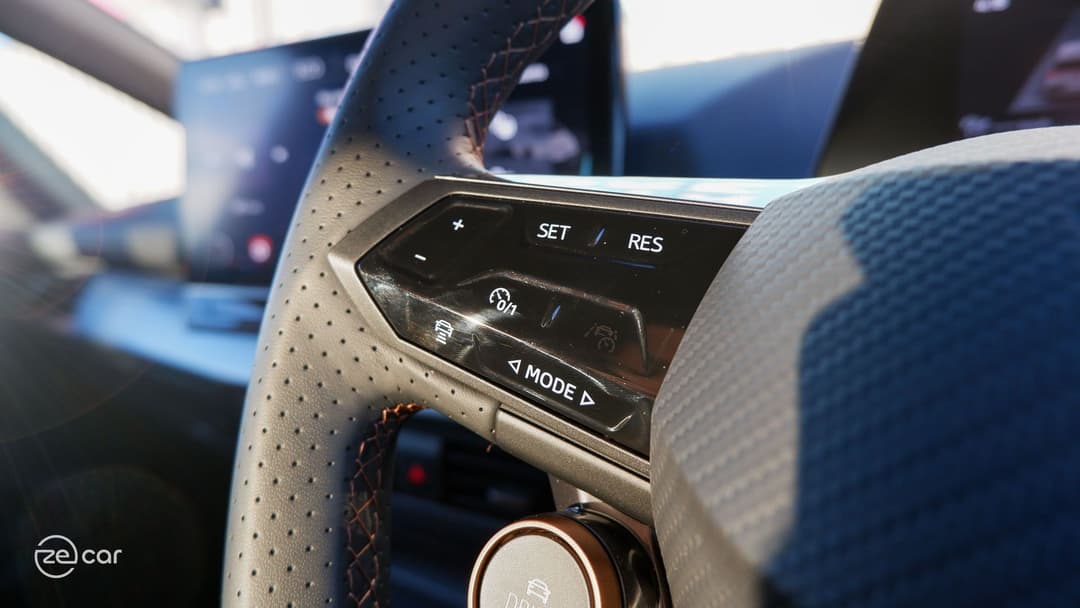
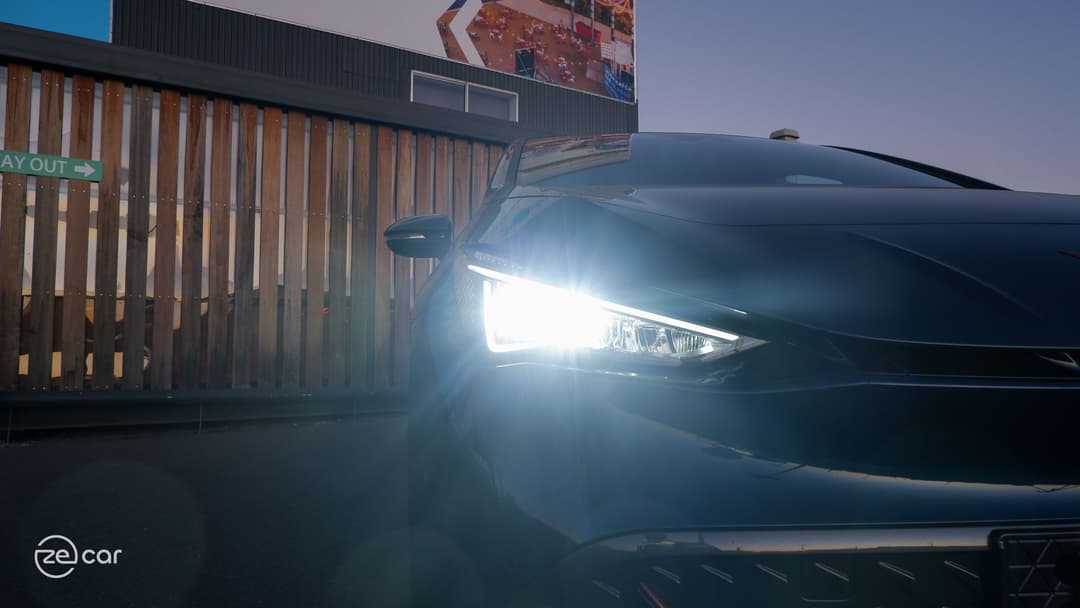
It’s worth noting that our Cupra Born tester didn’t have an external pedestrian warning sound, which can be problematic when driving at low speeds around pedestrians, especially for people with a hearing impairment. It’s an important EV safety feature that’s found in Borns overseas.
A highlight, though, is its full LED lighting system. While it doesn’t offer any adaptive matrix functionality and doesn't appear to be large clusters on the outside, the LED headlights shines impressively at night with great reach and spread.
The carmaker has even managed to pack a cornering function at low speeds, plus front and rear fog lights, and prominent turning indicators. There’s only one reverse light at the rear-left side, though.
Cupra Born Range and Charging
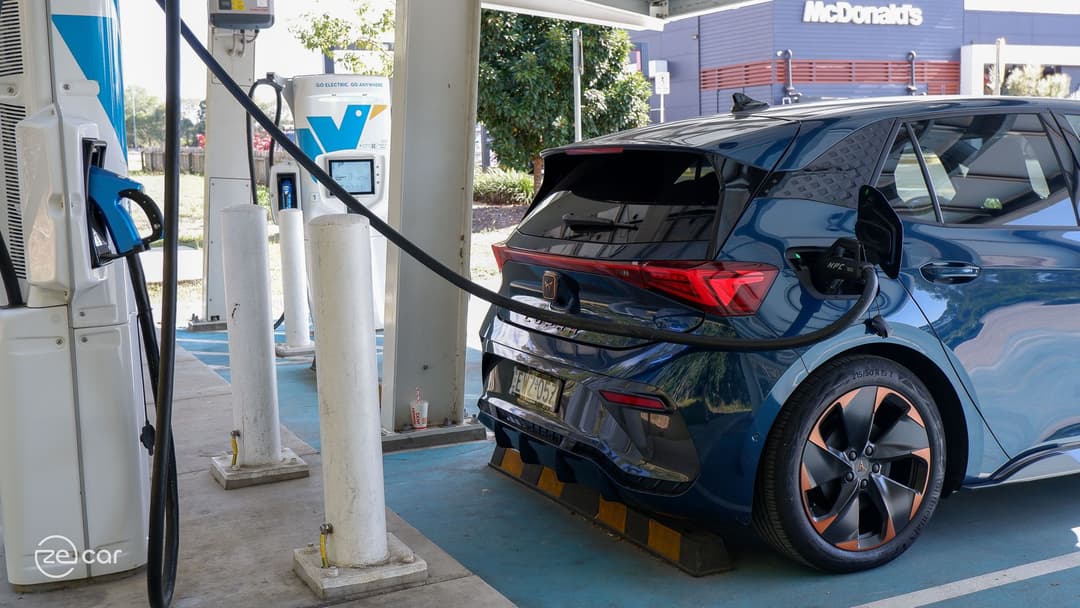
The Cupra Born small electric car features a large and energy dense 77kWh usable lithium-ion battery, with up to 11kW AC and 170kW DC charging speed capabilities, and a recommended regular charging limit of up to 80 per cent.
In our real-world charging test on a 350kW DC ultra-rapid station, the Born recharged from nine to 80 per cent in 30 minutes, with respectable sustained speeds over time – and an impressive 184kW peak.
That’s more than the claim, even though it gradually throttled down its speed after 30 per cent, but still maintained a solid 85kWs towards the 80 per cent mark. This is commendable for a standard 400-volt class based electric car.
Keep in mind that most public EV fast chargers in Australia are limited to 50kW DC, which would mean a full charge in about an hour.
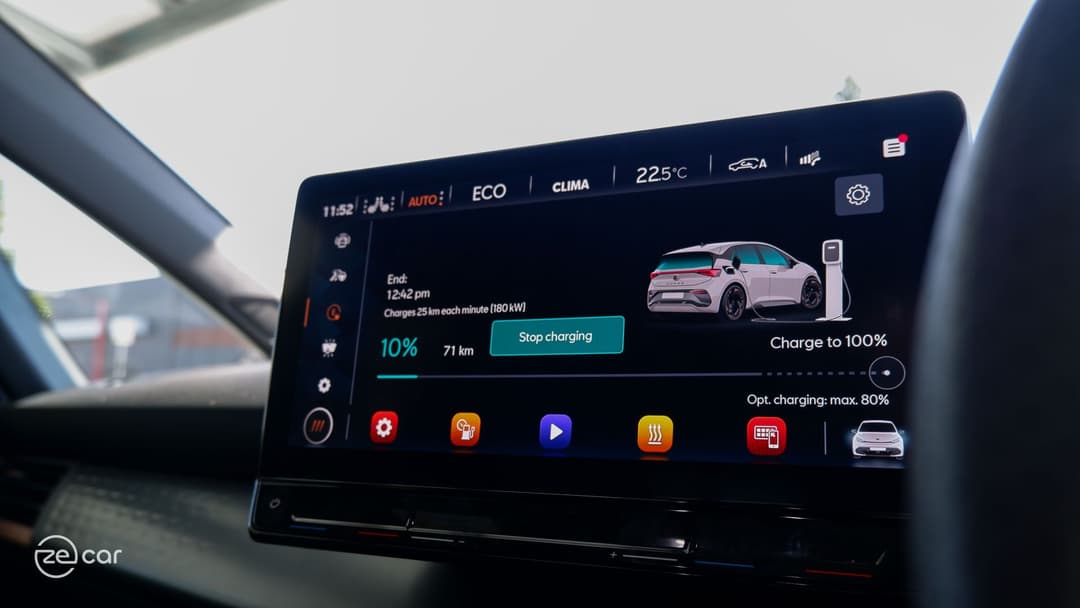
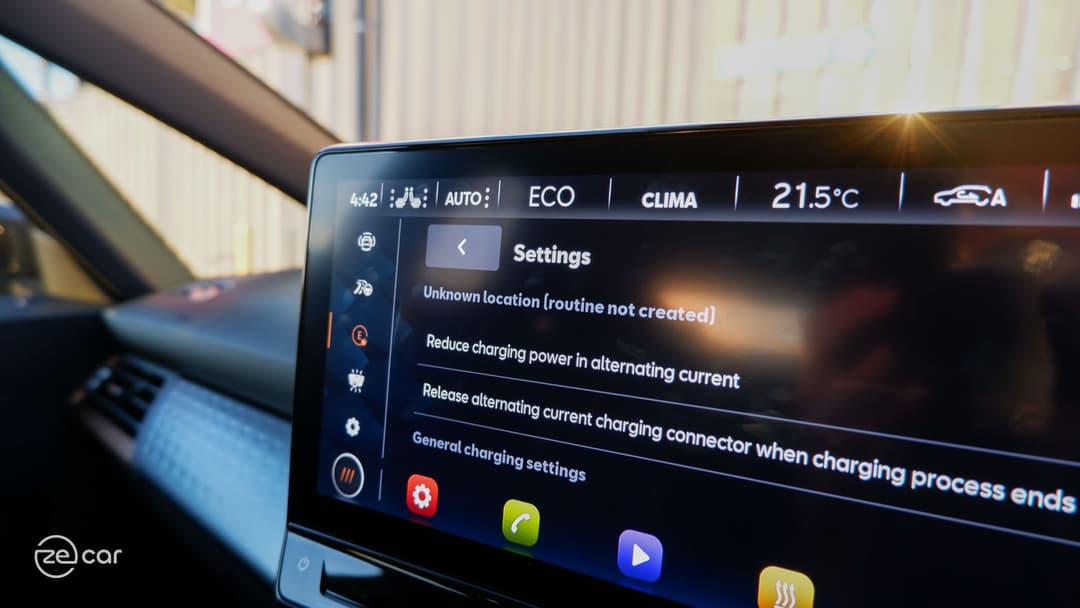
Due to the lack of connected services and built-in maps, it lacks a scheduled AC charging timer. This is inconvenient, particularly for owners who want to take advantage of cheaper off-peak electricity rates automatically.
Most smart Level 2 wall boxes have a scheduling function to mitigate this, but not all owners need it nor can install one at home. Likewise, a smartphone app would be convenient, especially for EVs to monitor charging. Local Born’s also lack a battery preconditioning feature.
The Cupra Born has an accessible rear-right quarter Type 2/CCS2 charging port location, with a clear light strip indicating the charging status.
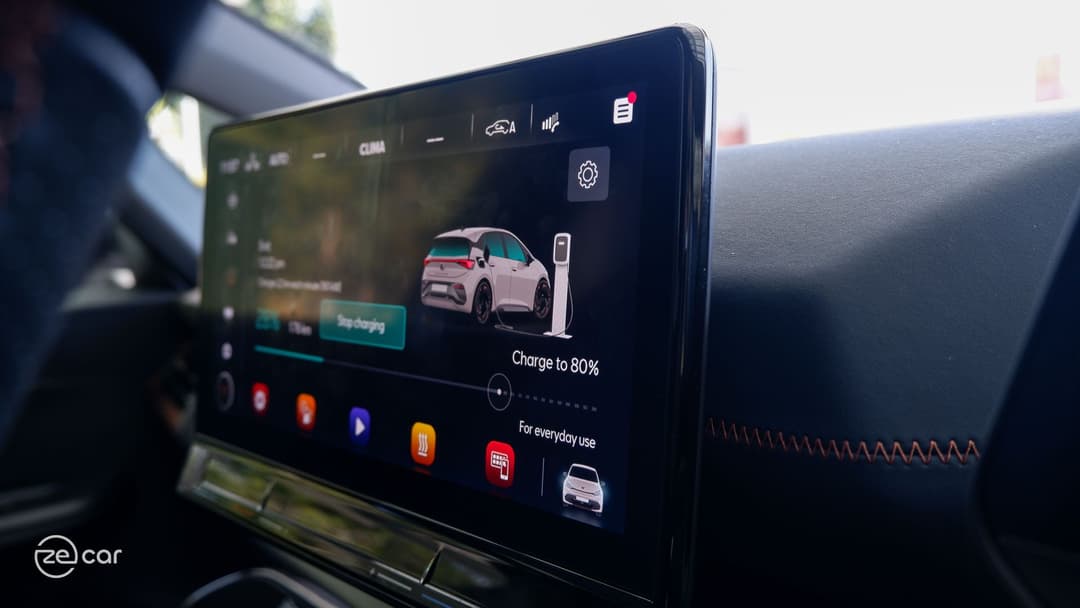
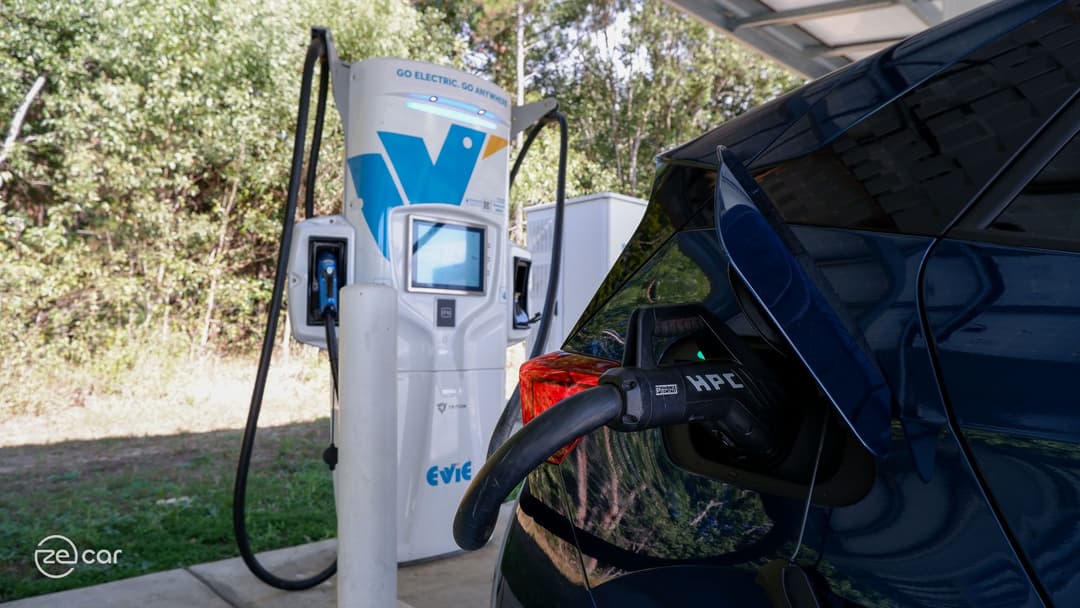
Additionally, the Spanish car brand claims the electric hatch offers up to 511km driving range from a full charge and 170Wh/km energy consumption on the combined WLTP testing cycle.
For context, the MG 4 77kWh Long Range hatch claims up to 530km, the Tesla Model 3 RWD sedan has up to 491km, and forthcoming base Volvo EX30 SUV boasts 480km of range.
In our experience driving a mix of urban and highway conditions, the Born achieved 475km real-world range and 162Wh/km efficiency – an impressive feat from a small car with a heavy energy dense battery.
That's despite some harder acceleration behaviour and the lack of a strong regenerative braking mode. It’s even comparable to the Hyundai Ioniq 6 sedan, which has a much more aerodynamic-focussed design and slightly smaller pack.
Opting for the $2600 Performance Pack reduces the Born to 475km claimed WLTP range with higher 182Wh/km consumption likely due to the larger wheels, so I'd steer clear of it given the standard model already drives well.
Cupra Born Driving and Ownership
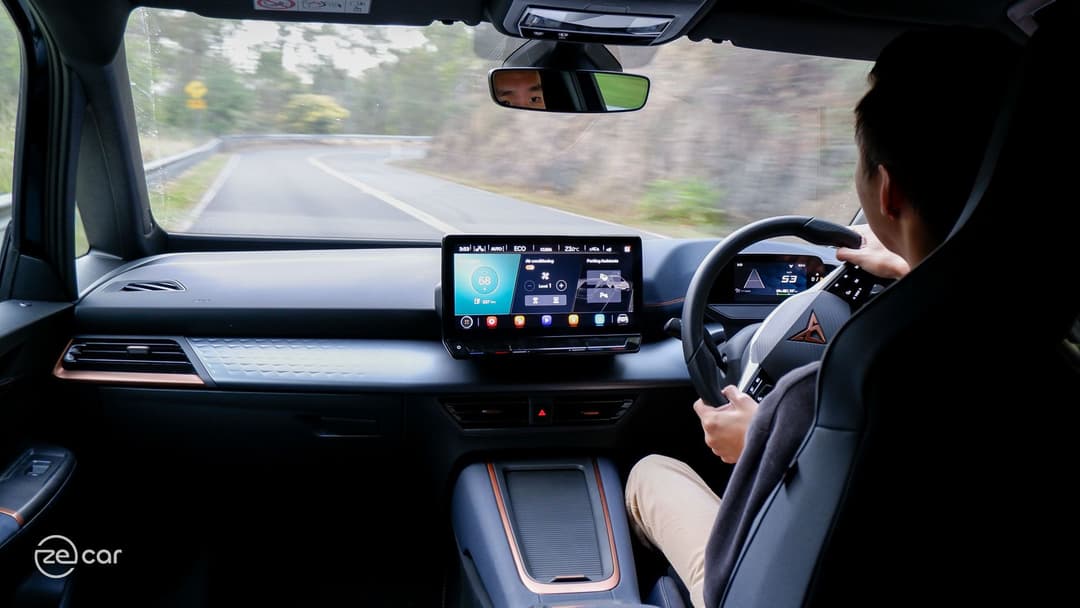
The Cupra Born is powered by a single electric motor producing 170kW of power and 310Nm of torque. It is rear-wheel drive and claims to accelerate from 0 to 100km/h in seven seconds.
Despite the electric hot hatch marketing, its performance figures are middling compared to the petrol-powered 221kW/400Nm Cupra Leon VZx and 180kW/370Nm Volkswagen Golf GTI. But, they weigh 1503kg and 1477kg respectively compared to the Born's 1927kg (or 1960kg with four-seater option packages).
It provides spritely acceleration that balances comfort well, without a dramatic neck-braking feel as on other hyper electric cars.
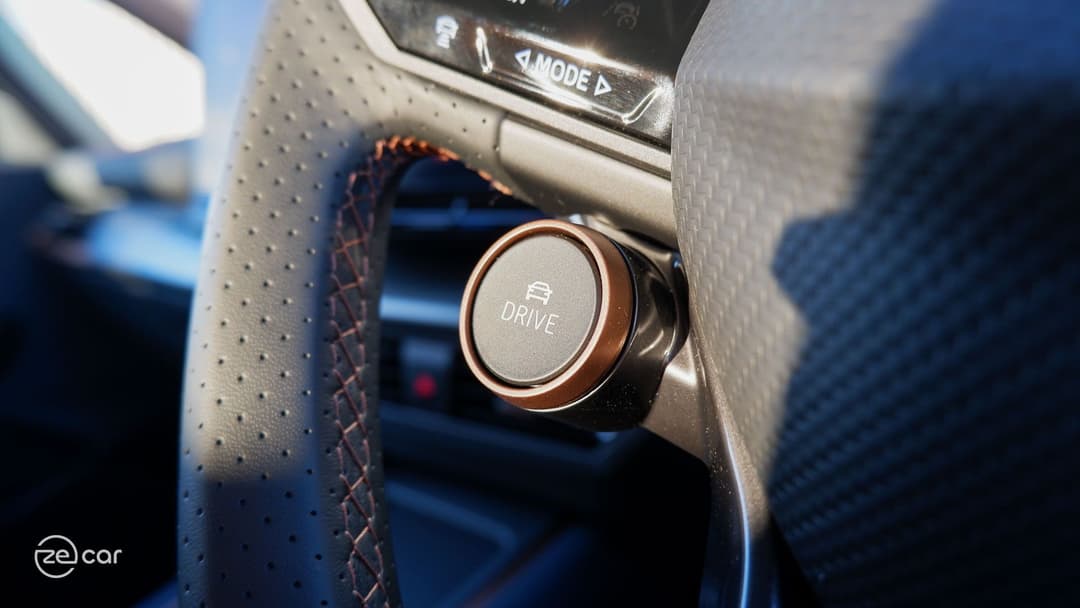
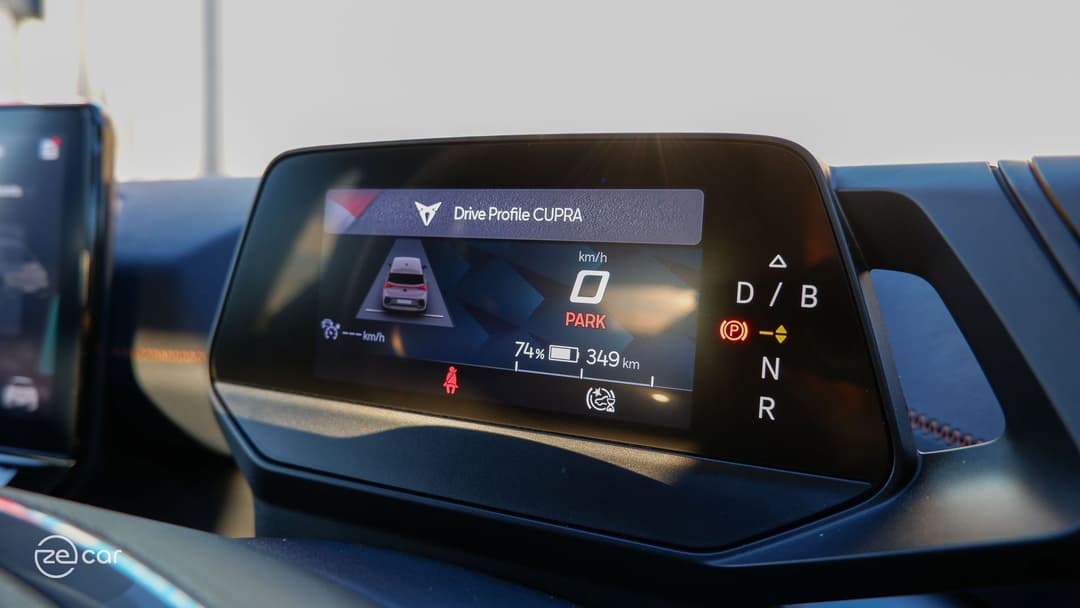
While the only two physical steering wheel buttons are for changing between the five different drive modes, they were gratuitous with all sharing a similar pedal and steering feel.
The most efficient range mode often only gave around five to 10 kilometres more indicated range, while Cupra mode unlocks the full e-Boost power – even though the standard comfort mode already provides good acceleration. Even in Cupra mode, the steering does become slightly firmer, but could still be tuned a touch more sharper and responsive.
The Born also can't mask the physics of its large energy dense battery when going around corners quickly. It is nimble due to the small dimensions – but has some noticeable heavy body lean, despite the low centre of gravity.
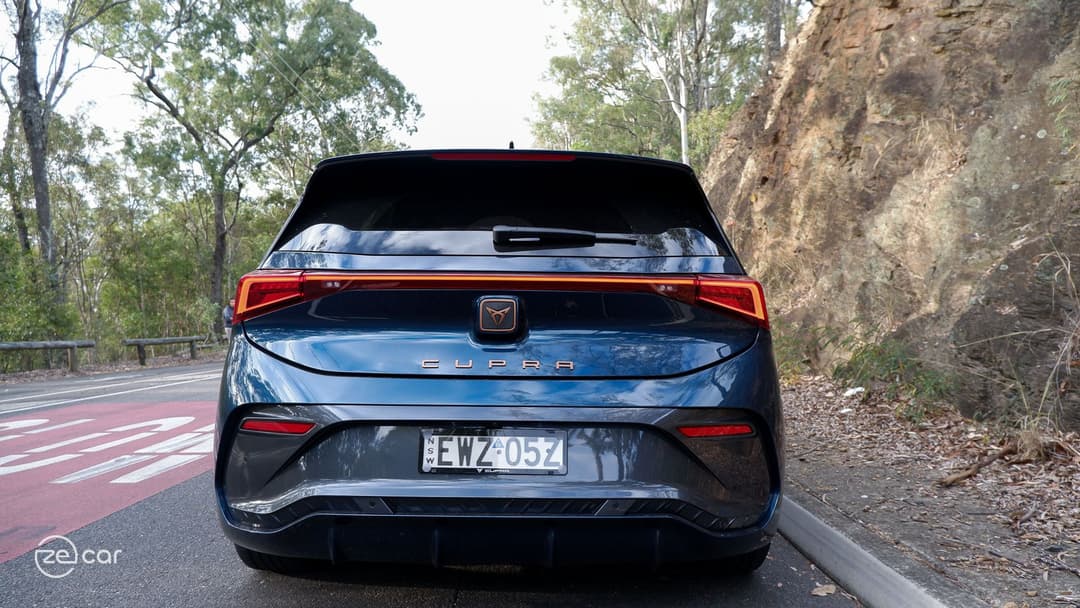
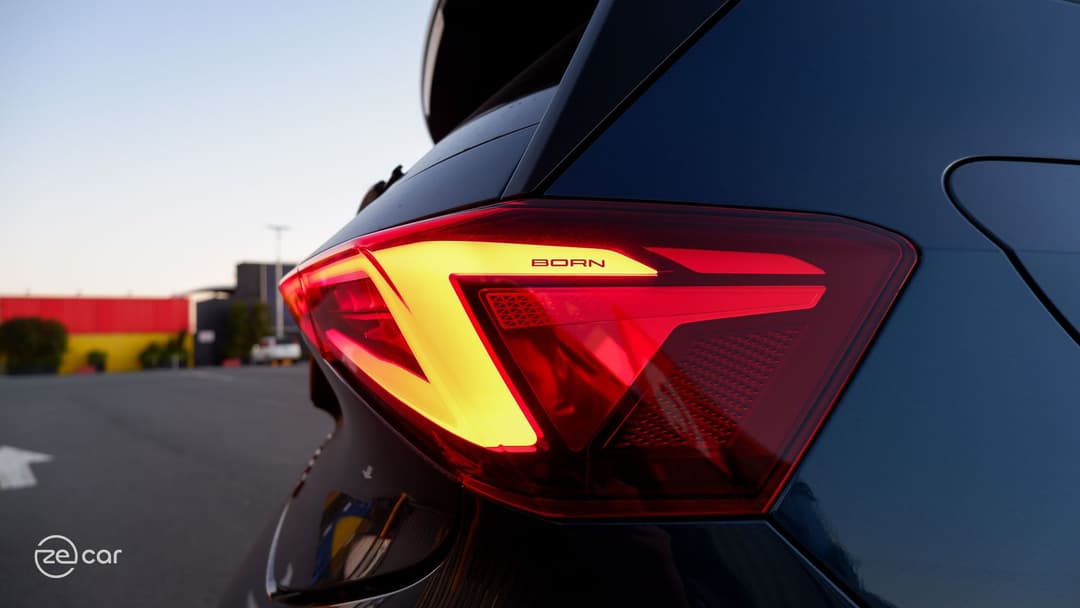
A smaller 58kWh usable battery available overseas could help offset the weight deficit, while not compromising on the rear middle seat when option packages are fitted.
The standard suspension and 19-inch (215/50) wheels in Continental EcoContact 6 tyres is grippy and deals well with rougher road surfaces, with only some sharpness into the cabin when initially hitting imperfections and joints.
Adding the $2600 Performance Pack introduces adaptive dampers, but counterintuitively lower profile 20-inch wheels and reduces claimed range by 36km, so it doesn't appear to be worth the splurge on paper.
Noise isolation was also good with refined minimal motor whine. But, I would welcome the option to have artificial driving sounds as per its Porsche Taycan corporate counterpart, Kia EV6 or Hyundai Ioniq 5 N for a more engaging driving experience.
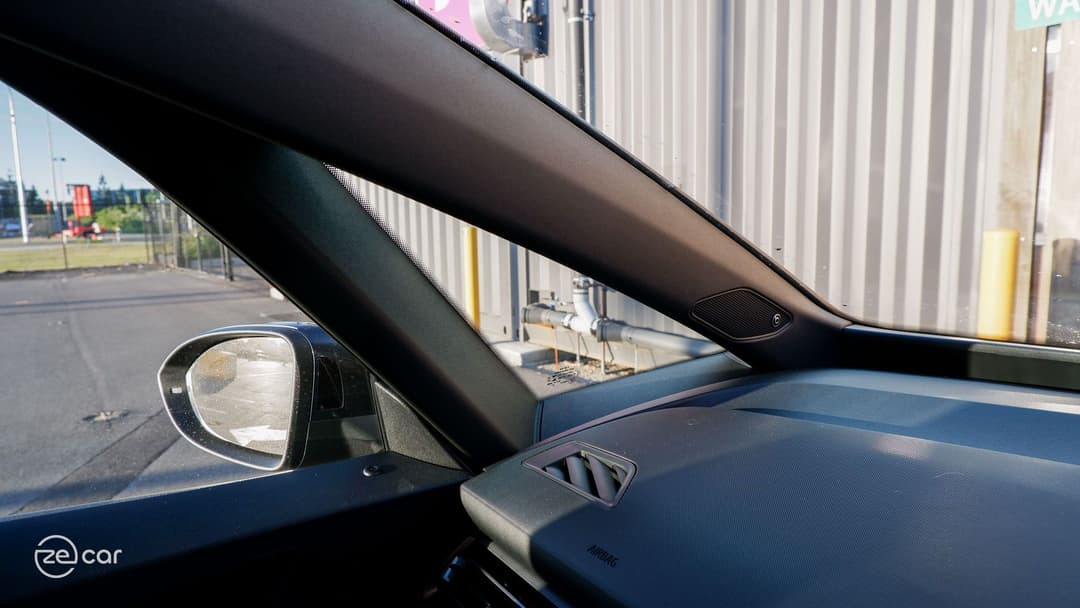
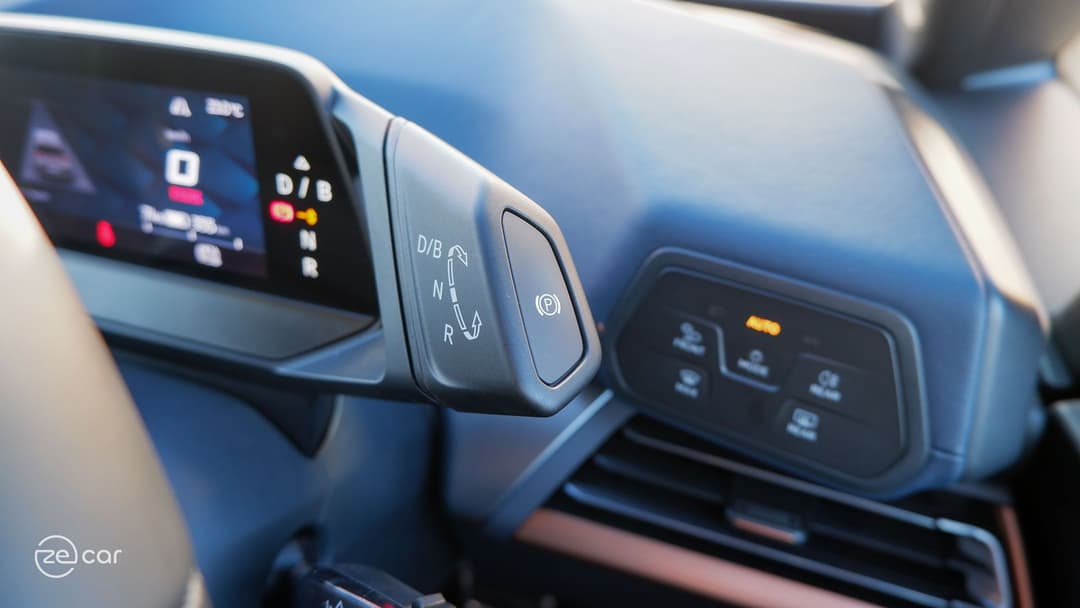
Moreover, visibility is van-like with a large A-pillar glass opening, though the wing mirrors and rear view mirror are on the smaller side. The small car dimensions and rear-drive setup also means that it's a great urban roundabout.
It's easy to get into the Born with no need to press a button to start the car and an ergonomic drive selector beside the instrument cluster to easily flick between directions.
As per all MEB-based cars, the Cupra Born only offers a B mode for regenerative braking. It is still weak, but works well for slowing down before a corner and is a good transition for drivers coming from a combustion-engined vehicle.
Activating Cupra mode makes regen compulsory and increases the intensity to the point that it can be hard to modulate the accelerator and feel jerky with slight foot movements, without good practice. The blended brake pedal also felt somewhat stiff at times.
Given it's a sporty electric car, I would welcome paddle shifters like on Hyundai Motor Group EVs to give more control over regen and a one-pedal driving mode.
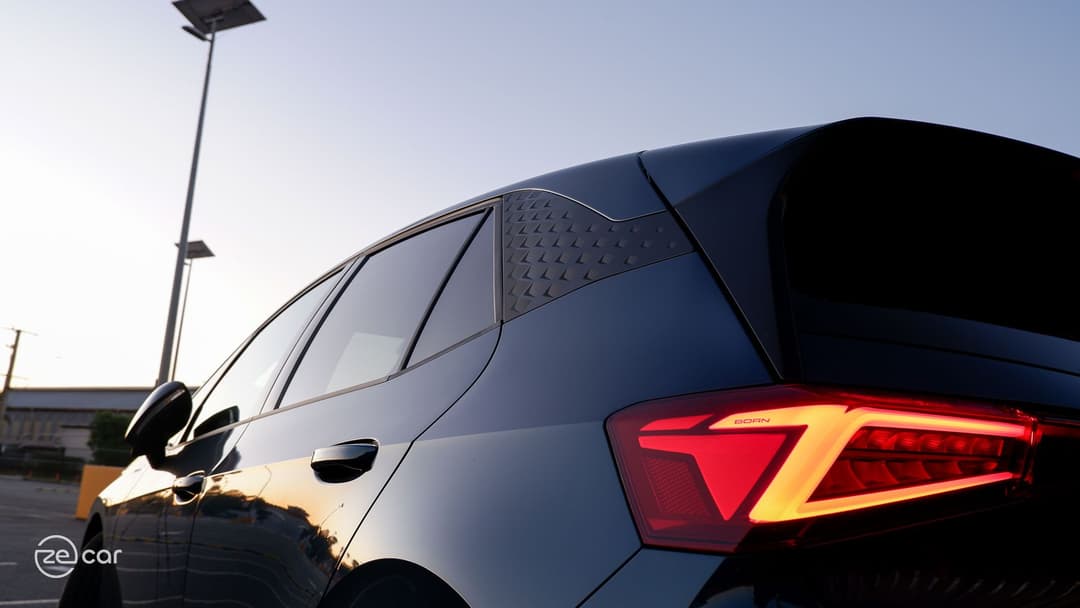
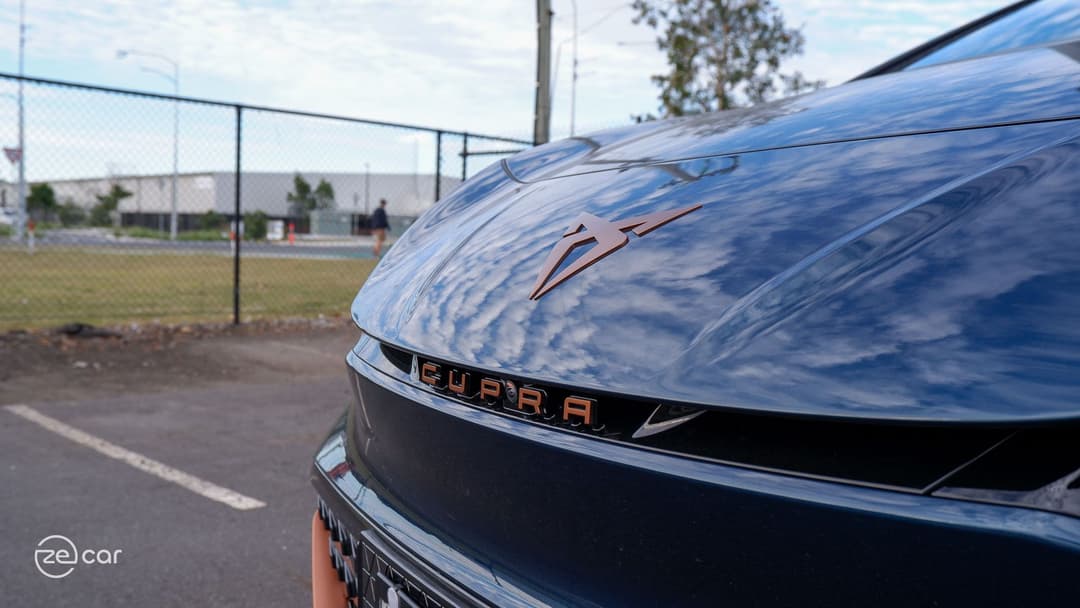
The Cupra Born is covered by an industry-standard five-year, unlimited kilometre vehicle warranty and an eight-year/160,000km battery warranty.
Servicing is required every 12 months/15,000km, which is identical to its petrol-powered models. The carmaker hasn’t detailed capped-price servicing costs, but three- and five-year prepaid servicing packs are sold at $990 and $1590 respectively. This works out to around $325 per year.
2023 Cupra Born Verdict
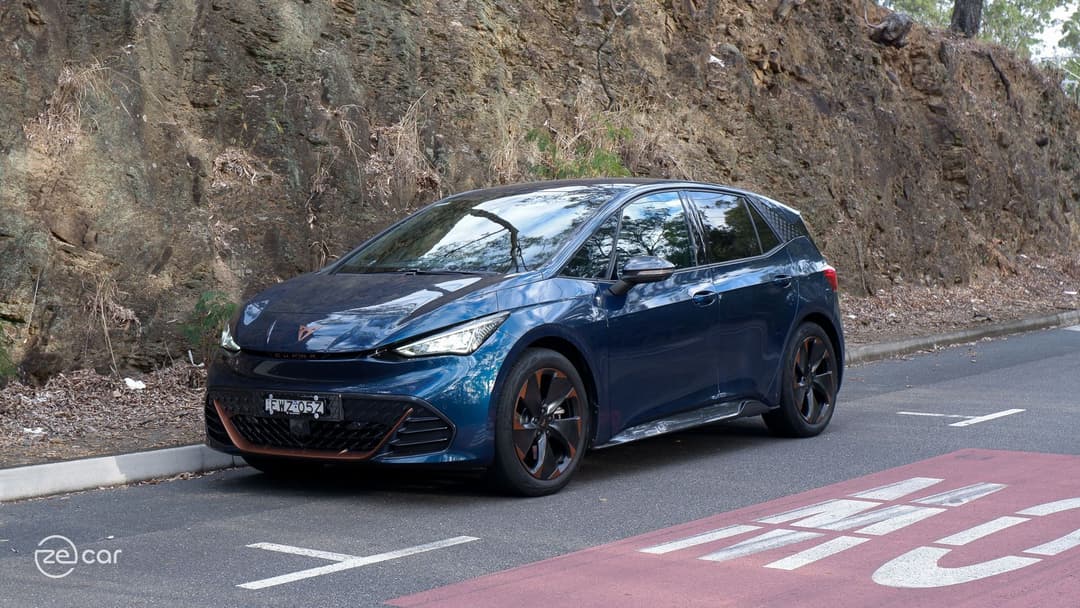
Overall Rating: 6.8 out of 10
💰Value for money: 6
📱Tech and safety: 4
📏Size and practicality: 7
⏱️Driving and performance: 8
🔌Range and charging: 9
🛠️Warranty and running costs: 7
Full pricing and specs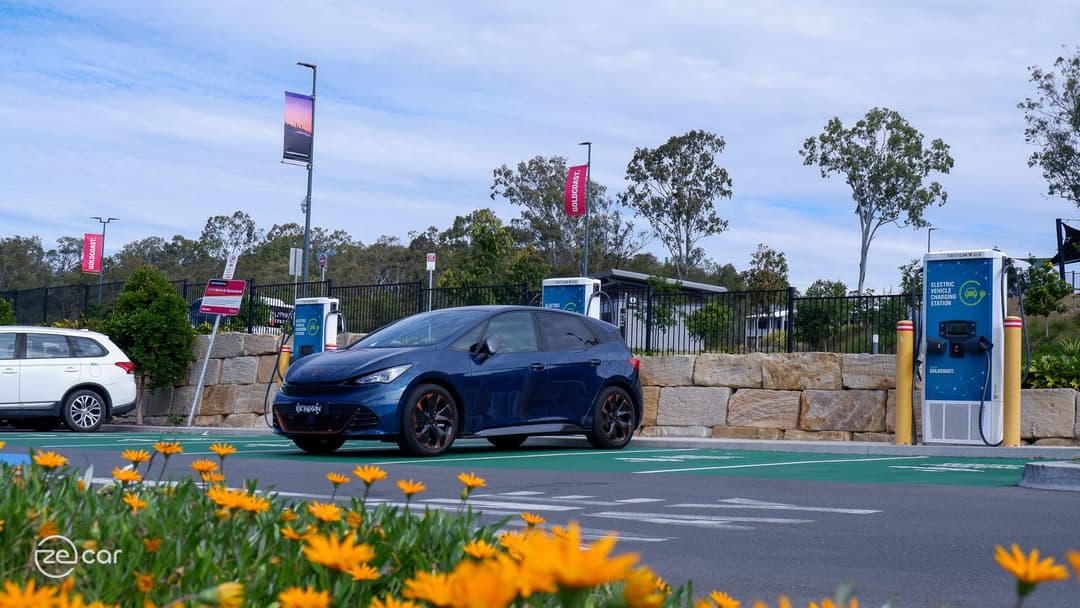
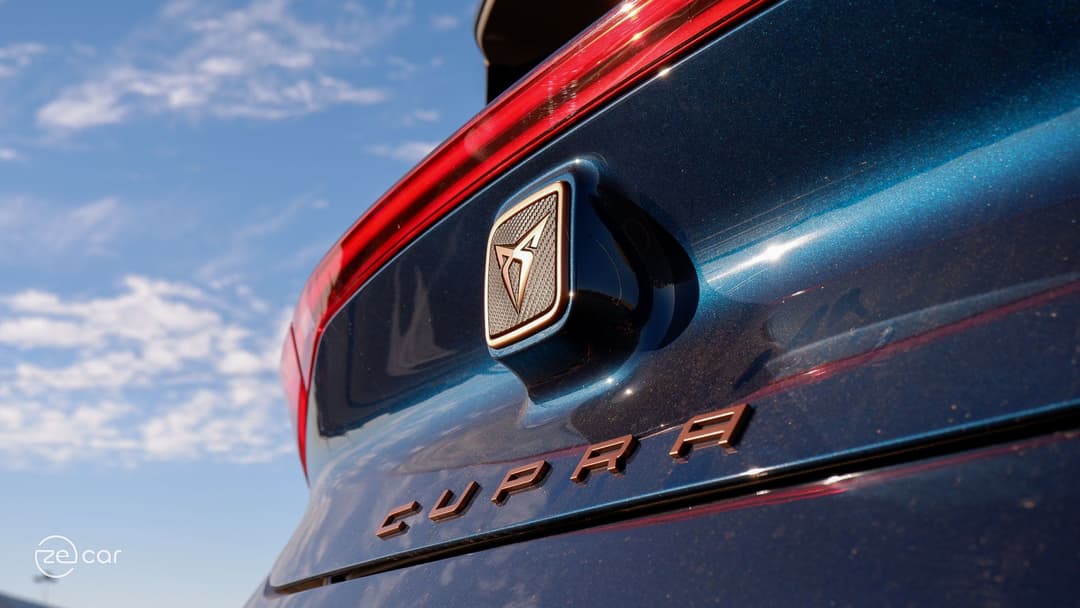
The Cupra Born has finally introduced some excitement to the electric hatch segment that’s been dominated by the decade-old Nissan Leaf. It offers sharp styling, long range, fast charging, and just enough power in a small city-friendly package.
However, peel back the sporty badge and eco-conscious marketing guff, and the Cupra Born is a heavy hot hatch that could use a smaller, lighter battery pack found overseas.
It’s another example of an EV being late to the Australian market and launching with a compromised features list – notably missing lane centring assist, built-in scheduled AC charging, and a connected smartphone app that’s expected for a $60,000 electric car.
The Born’s technology setup is distracting with a steeper learning curve, the interior quality is sub-par, and the ground-up EV platform also isn’t as practical in reality.
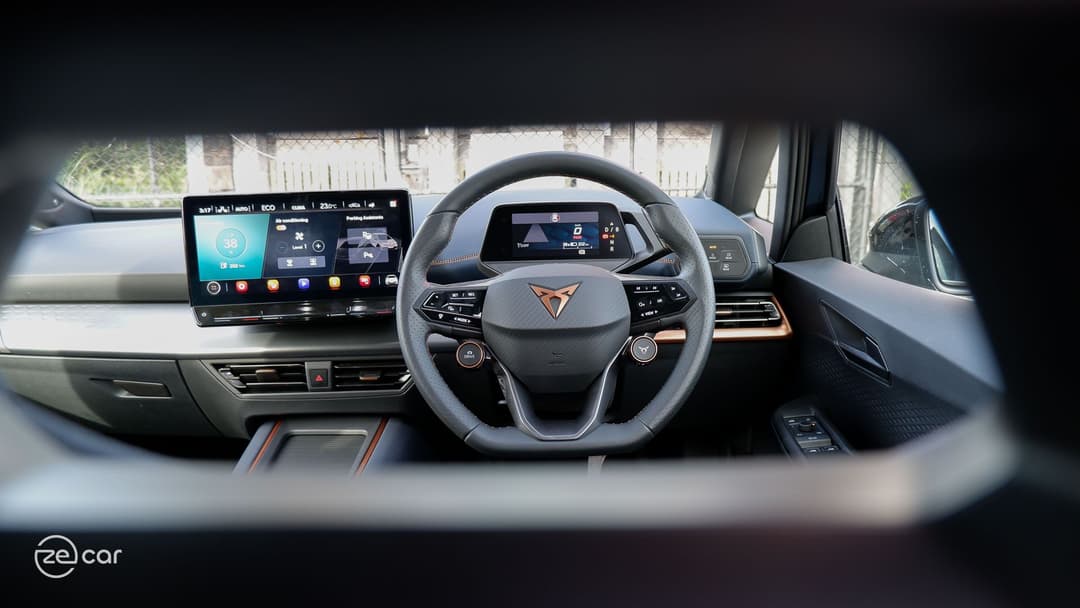
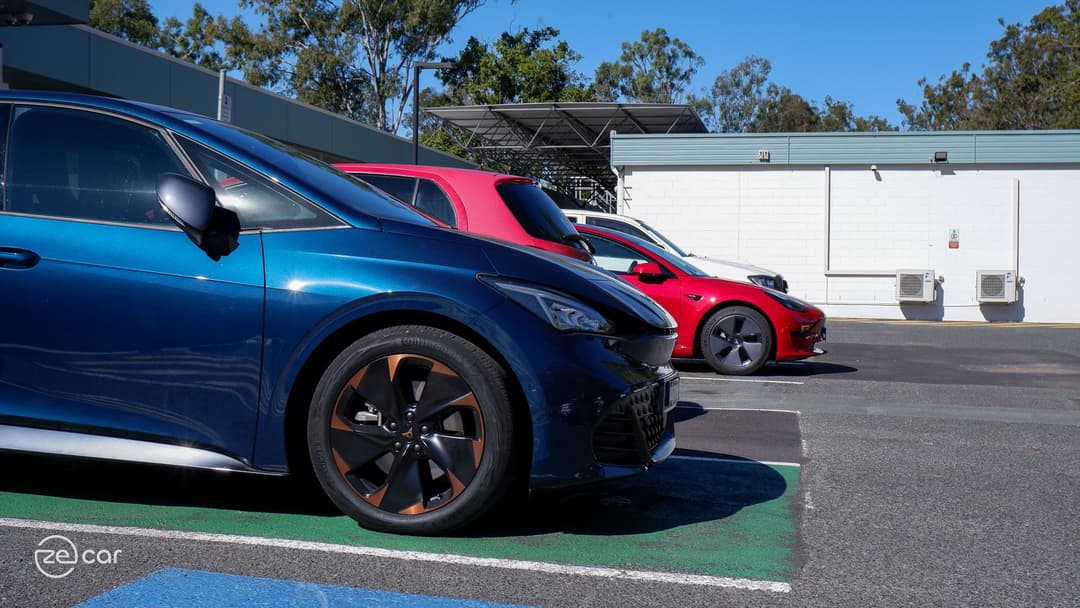
Importantly, it could be more price competitive with the MG 4 and the missing features would be more acceptable if Australia had a lower-specced, small battery version priced nearer $50,000 – as Cupra Australia has done with the introduction of the entry-level petrol-powered Leon V variant.
Nonetheless, the standard Cupra Born is our pick as the expensive Interior Package isn’t worth the spend – unless heated seats are a priority – and the Performance Package compromises on range with the base suspension already quite comfortable.
With a Born facelift not too far away, the Tesla Model 3’s fluctuating prices and the identically-priced Volvo EX30 coming soon equipped with more power in a popular small SUV body style, the Cupra Born isn’t as compelling compared to a year ago when it was confirmed for Australia.
The local EV market has moved apace…
Cupra Born FAQs
Datawrappers by Danny Thai
Photographs by Henry Man
Read more👇
2023 Cupra Born price and specs
About the author
Stay up to date with the latest EV news
- Get the latest news and update
- New EV model releases
- Get money savings-deal




